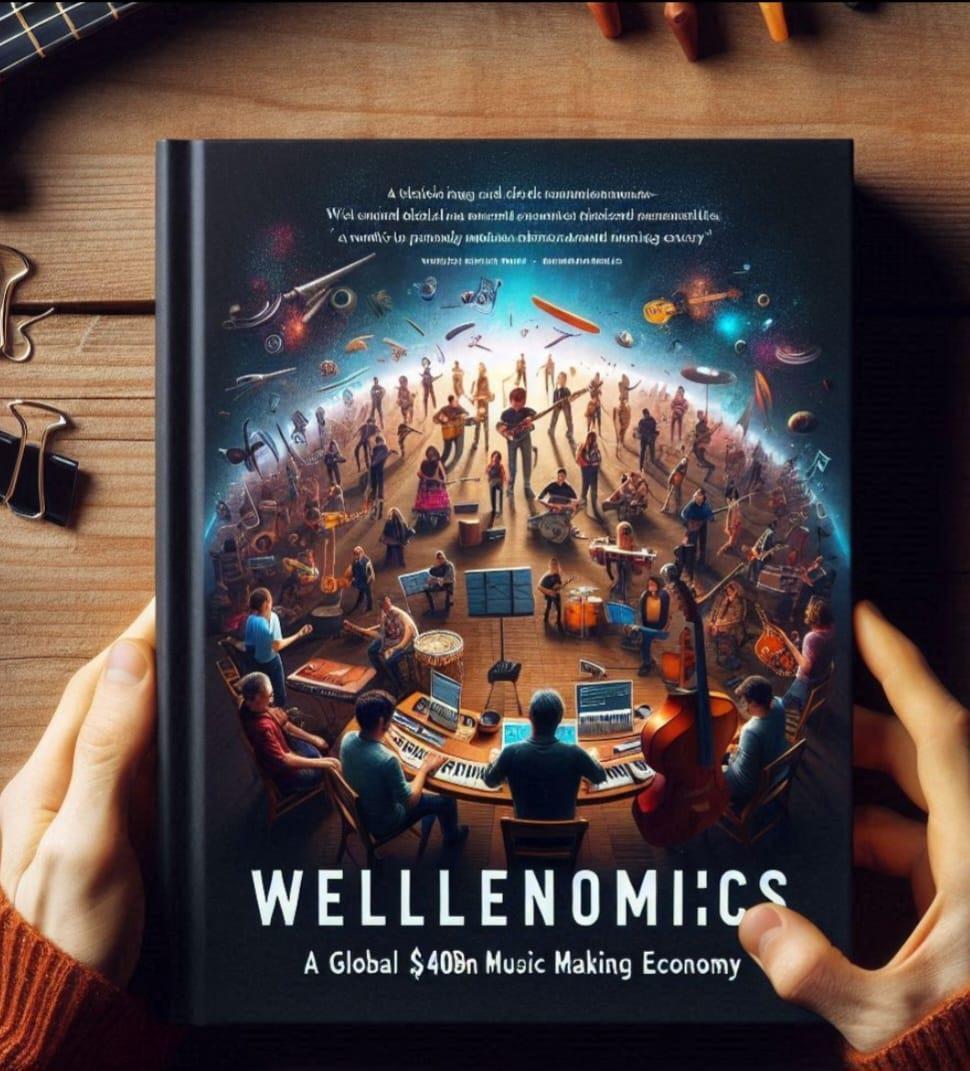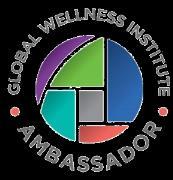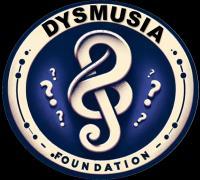








1. The Book

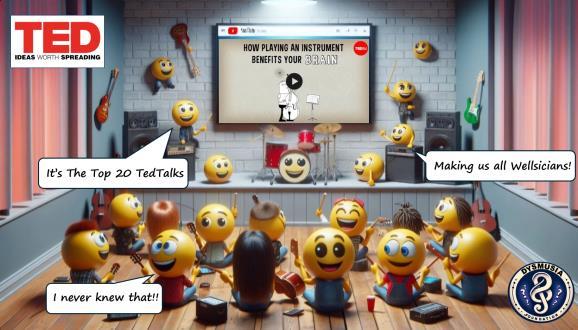
2. The Background






About the $4Bn Opportunity A Blueprint For Global Wellness & Well-Beings - LINK
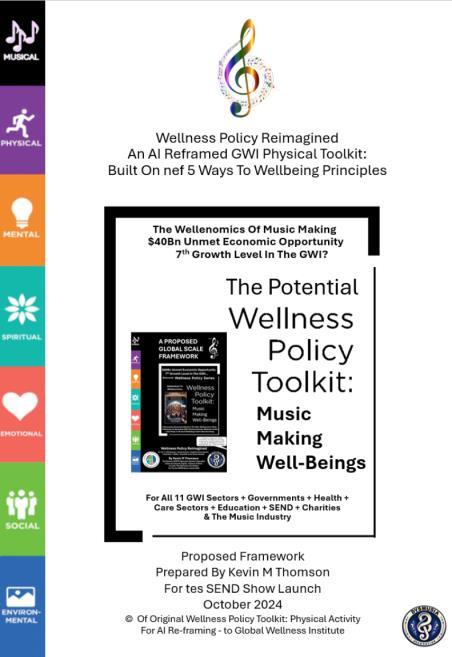












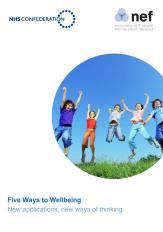



About The Neuroscience of Music Making The Top 20 TedTalks & Treaties Music Making Well-Beings Rooted In Science! - LINK




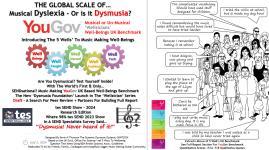
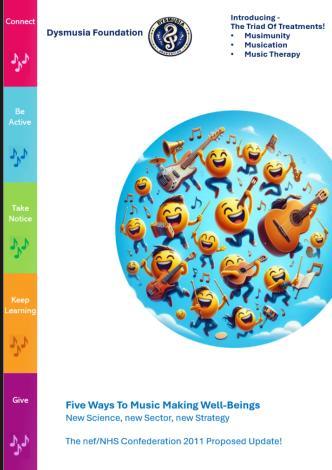
3. The UK Benchmarks





Of The 5 Ways To Music Making Well Beings The Global Scale of Dysmusia Are You Dysmusia Aware? - LINK The SEND Teaching & Tutoring Test Based on UK Govt. /nef Report - LINK
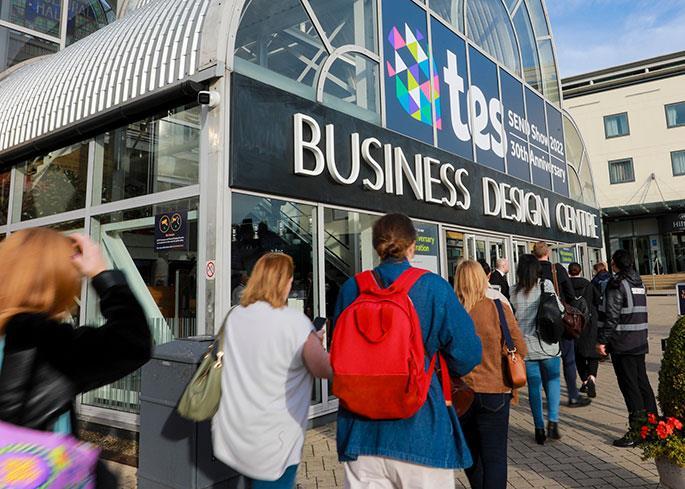
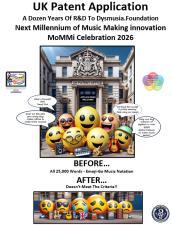

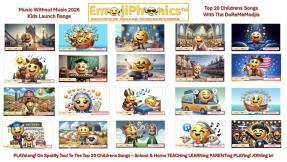




5. The Brief For 1Tn Global Impact For Governments, Education, Business, Health, 11 Wellness & Music Sectors - LINK 4. The Beta Test Of The Dysmusia.Foundation tes SEND Show Launch - LINK Of EmojiPhonics A Search for SEND Partners


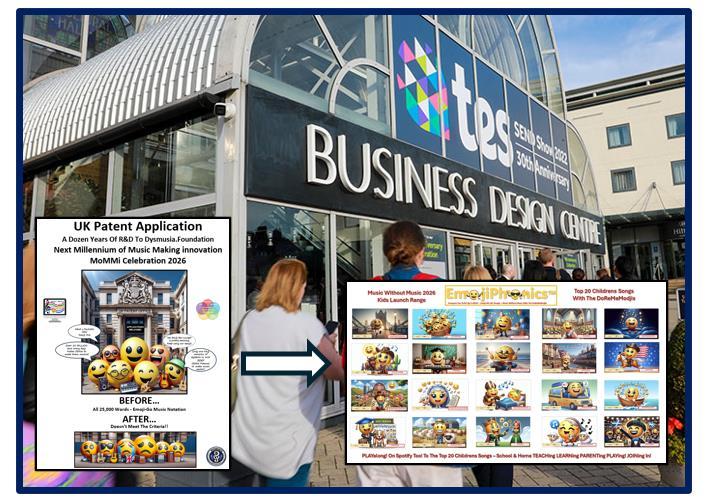
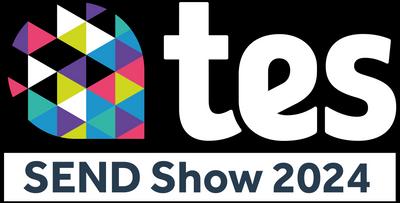
Dysmusia.Foundation Launch at the TES SEND Show 2024:
October 11 & 12, 2024, mark a significant milestone in the world of special educational needs and disabilities (SEND) with the launch of the Dysmusia Foundation at the TES SEND Show. The dysmusia.foundation aims to revolutionise the approach to music education and well-being, addressing three critical areas that affect us all. By fostering a world of newly defined Dysmusicians, both SEND and non-SEND, the Dysmusia Foundation is set to redefine how we perceive and engage with music making.
1. Global Wellness Sectors and Music Making Well-Beings
The Global Wellness Institute (GWI) has no defined sector or growth plans specifically addressing the intersection of music making and wellness. The Dysmusia Foundation aims to fill this gap, drawing on insights from the book *Wellenomics* and the proposed *Wellness Policy Toolkit: Music Making Well-Beings*. This initiative seeks to integrate music making into the broader wellness landscape, providing practical applications and systems to enhance well-being through music.
2. The Revealed Scale of Dysmusia
The YouGov UK Benchmark survey has uncovered the extensive prevalence of Dysmusia, affecting both SEND and non-SEND individuals. The term Dysmusia was originally discovered/coined in 2020 i.e nearly a quarter of a Century ago. It originally meant some form of ‘musical dyslexia. Now with a new definition based on the YouGov UK Benchmark it has been redefined to encompasses both an inner Circle of Dys’ - of those with recognized multi-sensory SEND issues and an outer circle of non-SEND individuals who face challenges with music making. The TES SHOW Survey further highlighted a staggering 98% lack of awareness about Dysmusia. This underscores the urgent need for increased recognition and resources to address this pervasive issue.
3. Educational and Training Deficits
The intersection of wellness and Dysmusia is exacerbated by several critical gaps:
- The lack of teaching and awareness about Dysmusia.
- The absence of a global SEND music training system.
- The need for a systematic set of multi-sensory tools to aid in music education. The EmojiPhonics Memorisation System, along with its suite of teaching aids like sheet music and SticKey Note tools, aims to address these gaps by providing innovative, multisensory methods for teaching music to all learners.


Making a ‘Stand’ For A New Wellness Policy
Dysmusia Foundation Launch at the TES SEND Show 2024: A New Era for Music
At the TES SEND Show, the Dysmusia Foundation will pose three pivotal questions on their stand, each aimed at transforming music education and fostering a new generation of Wellsicians. The stand will feature three banner headings, each addressing a core aspect of the foundation's mission:
1. Do You Teach Future Wellsicians?
- With the insights from the book *Wellenomics* and the *Wellness Policy Toolkit: Music Making Well-Beings*, this question encourages educators to consider how they can integrate music making into their teaching to promote overall well-being.
2. Do You Know & Teach About Dysmusia?
- Highlighting the YouGov UK Benchmark, this question aims to raise awareness about Dysmusia and encourage educators to incorporate this knowledge into their teaching practices.
3. Can You Teach the 110% of 'SENSsicians'?
- Addressing the 20% of SEND individuals and the 90% of non-SEND individuals who never try or give up on music making, this question promotes the use of the EmojiPhonics Suite as a tool to engage all learners in music education.
Conclusion
The launch of the Dysmusia Foundation at the TES SEND Show 2024 is more than just an introduction of a new organization; it is a call to action for educators, policymakers, and the wellness community. By addressing the gaps in music education and integrating innovative tools and systems, the Dysmusia Foundation aims to create a world where music making is accessible to all, fostering a new generation of Wellsicians who can harness the holistic benefits of music for wellbeing.
Join us at the TES SEND Show to explore how you can be part of this transformative journey. Together, we can unlock the potential of music making to improve lives and promote wellness across all sectors.

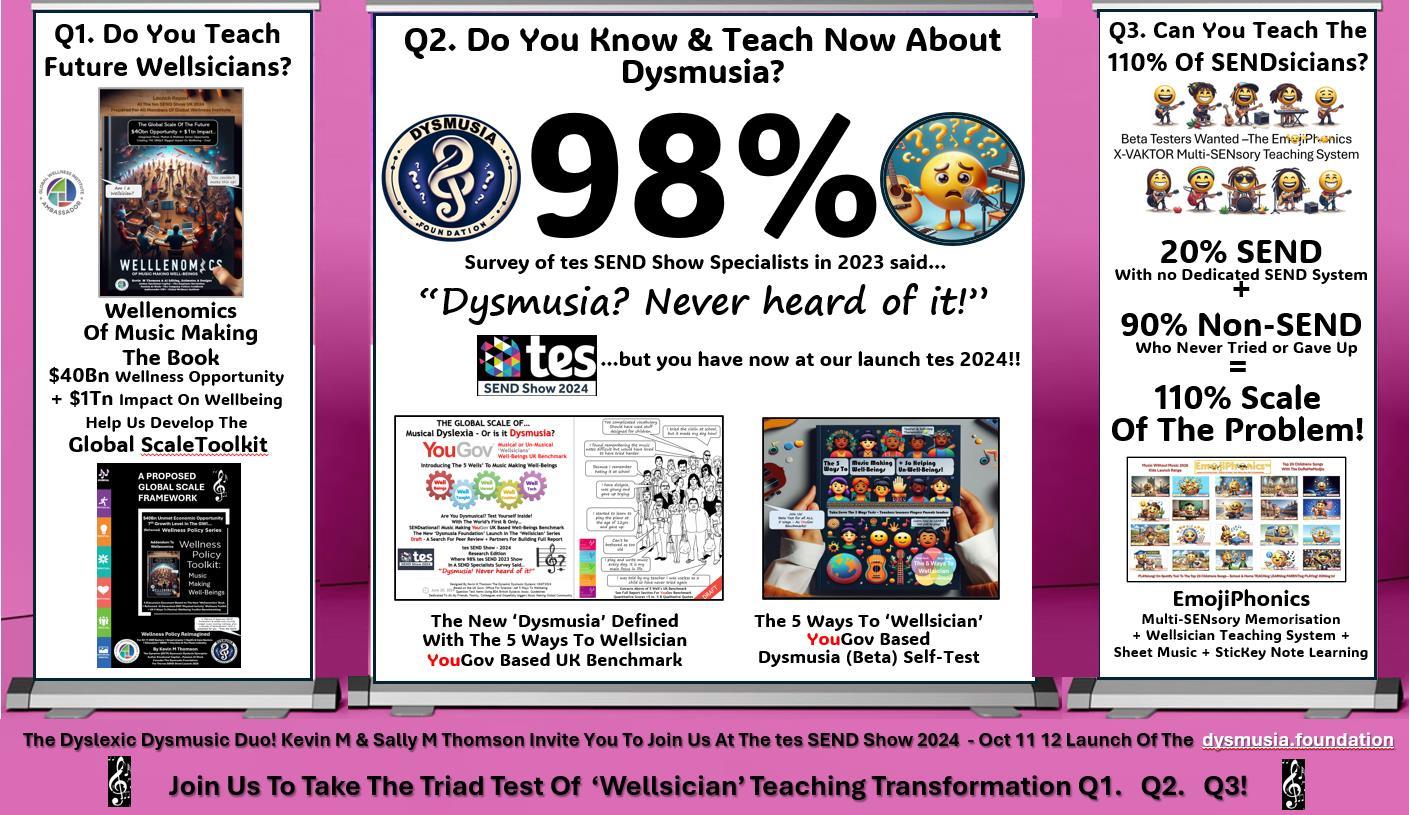


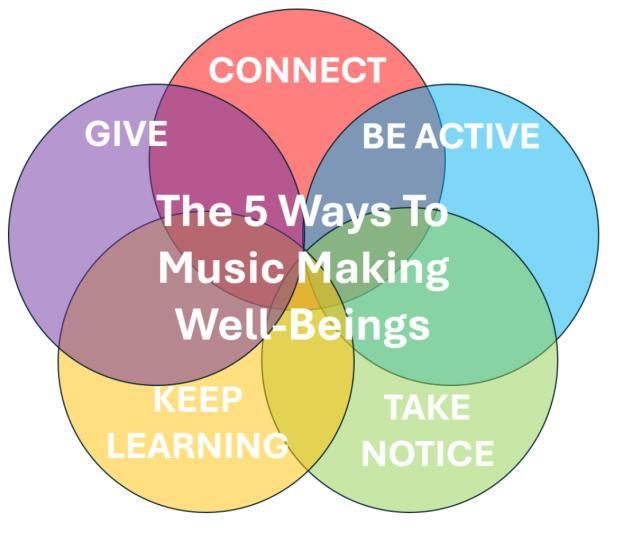

1 – For this 1st Edition Prepared for the tes SEND Show 2024 – London
By Kevin M. Thomson
– The Dynamic (ENTP) Dysmusic Dyslexic On A Mission – With A Vision! Music Making Wellness + Wellbeing & Happiness
Two Distinct Concepts X Multiple Unifying Goals

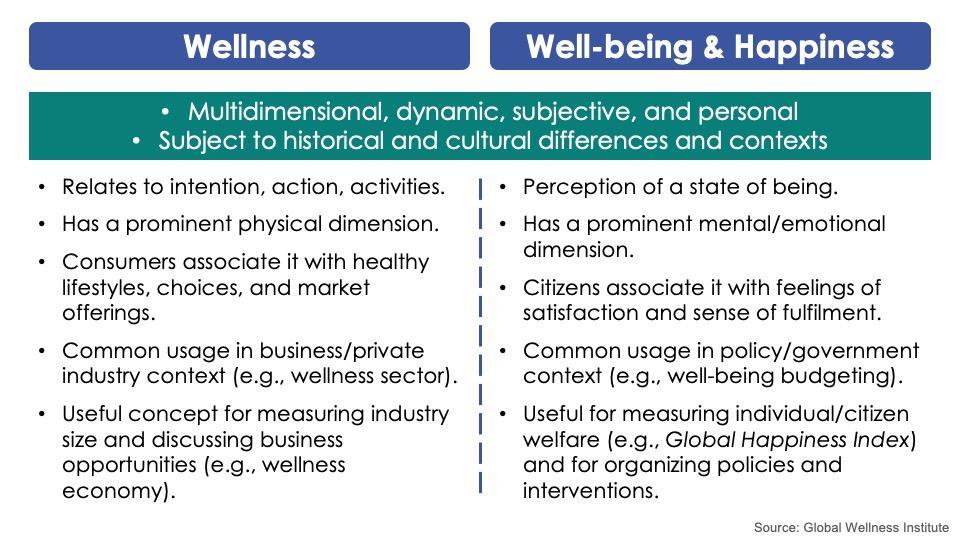


The Wellenomics - of Music Making Global Wellness & Local Well-Beings - this Blueprint is, I believe, (backed by the amassing evidence – herein - I call ‘Rooted in Science!’) a Wellness Revolution: Much like my first book ‘The Employee Revolution – FT Pitman’ which introduced the concept of 'Internal Marketing’ as opposed to ‘employee communication’: In short from an ‘information giving’ methodology of ‘newsletter’ driven ‘comms’ to a ‘marketing’ methodology of targeted user driven ‘messaging’ – this too is truly a revolution – driven both by neuroscience and wellbeing research including the new Dysmusia.Foundation 5 Ways To Music Making Well-Beings YouGov Benchmark.
A ‘revolution’? Yes, not least because there is no Music Making Sector in the GWI only a tiny Music Therapy element; where all the latest Neuroscience on Cognitive Development and now Social Neuroscience of Music Making Social Connection Wellbeing and Happiness (oxytocin et. al!) tells us music making is the No. 1 way to building mental, health and wellbeing - as well as the therapeutic elements of helping un-Wellbeings back to wellness.
This new, globally evidence-based blueprint and outline discussion document for all, I’ve called the Wellenomics of Music Making Well-Beings. I seek to differentiate and bridge the GWI defined concepts of ‘Wellness’ and ‘Wellbeing’ applying these GWI principles contained in each definition to what CHATgpt reveals as the ‘missing opportunity’ of a new 12th Sector of ‘Music Making Well-Being.’
Wellness, as I interpret from the definitions by the Global Wellness Institute (GWI), encompasses the ‘intentions, actions, and activities’ necessary to create Well-Beings within a sector.
It is primarily concerned with the strategic integration of various elements to build a cohesive sector. The Wellenomics approach aims to establish a new 12th sector focused on Music Making Well-Being, integrating and enhancing all existing 11 wellness sectors. This strategic initiative recognizes a $4Bn economic opportunity within the wellness sector, offering a structured and unified approach to harnessing the power of music making a $1Tn economic impact on global wellness.
In contrast, wellbeing pertains to the perception of a state of being, with a prominent mental and emotional dimension. It involves the tactical execution of wellness strategies, focusing on individual and collective health outcomes. "Wellenomics Of Music Making Well-Beings" as a blueprint outlines a comprehensive Wellness Policy Music Making Toolkit, designed to implement these strategies across all wellness sectors, as well as in government, education, health, care, and charitable organizations. This approach aims to leverage the latest advancements in neuroscience and social neuroscience to achieve a £1Tn impact on global health and wellbeing measures.


By differentiating and integrating the concepts of both music making wellness and music making wellbeing, this initiative aims to highlight the differences and needs for creating both a new $4Bn Global Wellness Opportunity for a Music Making Sector- which then results in building a £1Tn Global Wellbeing Impact on individual and collective wellbeing.
The strategic vision for creating this new sector, combined with tactical execution across various domains of wellbeing and music making, sets the stage for a transformative movement in global health and wellness.
I hope this proposal as a discussion document will do 5 things:
1. Make you think about the untapped potential of music making in promoting well-being. 2. Make you believe in the power of music to transform lives.
3. Inspire you to act and incorporate music making into wellness initiatives.
4. Encourage you to deliver programs & policies that make music making accessible to all.
5. Ultimately, ensure that you and those you care for are not just part of the 20% SEND or the 90% who never tried or gave up, but part of the potential 100% who, regardless of skill level from playing a simple 4 Chord Trick to performing at the Royal Albert Hall creating a new World of Wellsicians.
My single simple (yet BIG BOLD) goal with this as a proposal and a discussion document is to inspire you to join me on this journey to harness the holistic benefits of music making, fostering a world where everyone can experience the joy and well-being it brings. Together, we can transform lives through the universal language of music a language we can make into a language of wellness and a tool for making well-beings for every age, young to old, every ability, whether SEND disabled or not, every capacity, academic or physical, and every achievement level desired, from playing for fun, playing by ear, or playing for exams to Grade 8 and beyond for a career.
Warm regards,
Kevin M. Thomson

Wellenomics of Music Making Global Wellness & Local Well-Beings - The Blueprint Book is a groundbreaking book that seeks to differentiate and bridge the concepts of wellness and wellbeing, applying these principles to the ‘missing opportunity’ of a new 12th Sector of ‘Music Making Well-Being.’
Understanding these distinctions, as defined by the Global Wellness Institute (GWI), is crucial for recognizing the potential $4Bn economic ‘opportunity’ within the wellness sector and the profound £1Tn ‘impact’ on global health and wellbeing measures.
In short, this initiative aims to highlight a $4Bn Global Opportunity for a Music Making Sector and a $1Tn Global Impact on all our individual and collective wellbeing.


Wellness, as defined by the GWI, encompasses the ‘intentions, actions, and activities’ necessary to create "Well-Beings" within a sector. It relates to the intention, action, and activities primarily in a business or private industry context, i.e., sector-based. Wellenomics seeks to set out how all 11 existing sectors can integrate music making opportunities under the banner of ‘The Single Biggest Impact on Wellbeing – Of All.’
This integrative approach is pivotal for motivating as well as measuring industry size and identifying business opportunities. In "Wellenomics of Music Making Well-Beings," we define how music making can be integrated into the wellness sector, unlocking a $4Bn opportunity.
We define how this can be done in each of the Wellness Activities and Music Making in its own right via a new proposed version of a Wellness Policy; Music Making Activity Toolkit
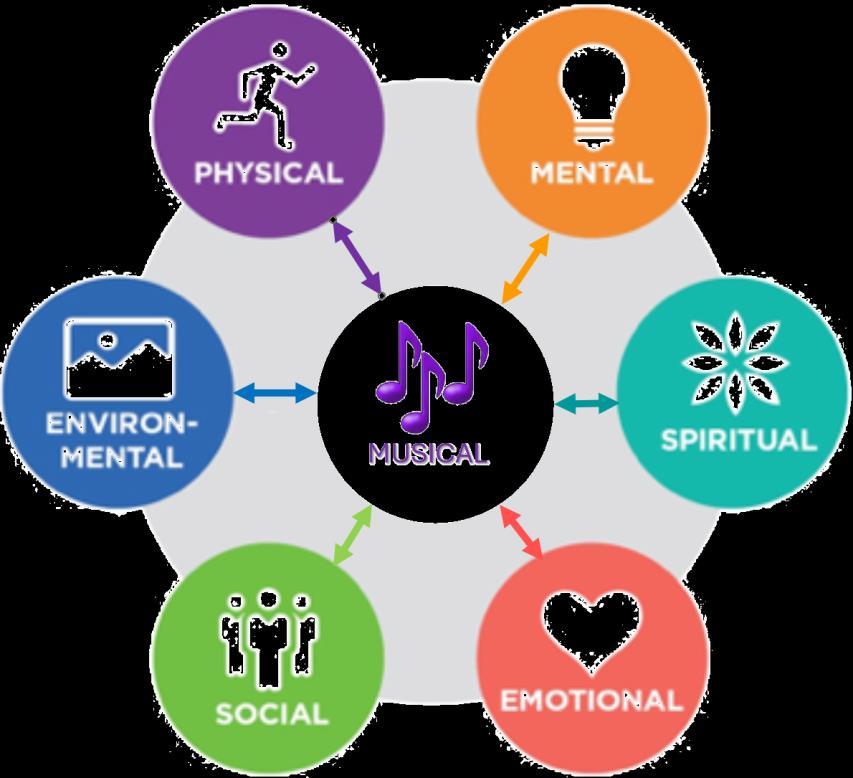

In contrast, wellbeing pertains to the perception of a state of being, with a prominent mental and emotional dimension. It is commonly used in policy and government contexts and is essential for measuring individual and citizen welfare. By leveraging the latest advancements in neuroscience and social neuroscience, the book outlines how music making can significantly impact global wellbeing, with an estimated £1Tn effect on society.
The "5 Ways to Music Making Global Wellness" strategy sets the stage for this transformation. Based on the idea of focusing on five actionable steps similar to the '5-a-day' fruit and vegetable campaign originally from the nef (New Economics Foundation) and the UK Government-sponsored Foresight project of the '5 Ways to Wellbeing,' this approach is detailed on the Wellsician.io website and comprises the following:
1. Well-Being: Defined in "Wellenomics – The Blueprint," this concept outlines the overarching vision, mission, values, and goals of creating a music making-centric wellness sector.
2. Well-Taught: Explores the neuroscience research behind music making's impact on wellness and wellbeing, featuring the Top 20 TedTalks on the subject.
3. Well-Versed: Involves tracking and trending the YouGov 5 Ways to Music Making Wellbeings nef Benchmark, providing insights into how music making influences wellbeing.
4. Well-Enabled: Focuses on the multi-sensory tools and teachings necessary for SEND (Special Educational Needs and Disabilities) and non-SEND individuals to achieve music making as a pathway to wellbeing, despite its complexity.
5. Well-Tech: Highlights the tools and technology required to create multi-modal solutions for all neurodiversity needs, catering to all ages and abilities.


We posit Well-Being within the framework of the 5 Ways to Wellbeing as defined by nef/UK Government Foresight. This framework includes all 5 Ways:
1. Connect: Building social connections through music making for all ages and abilities; not just listening to music but actively participating in learning, practicing, playing, performing, and connecting with parents, teachers, tutors, choirs, groups, orchestras, audiences, and all community members.
2. Be Active: Engaging in physical activities related to music, such as dancing or playing instruments for all abilities and disabilities.
3. Take Notice: Enhancing mindfulness and awareness through musical experiences through the conscious activity of physical, mental, spiritual, and emotional awareness.
4. Keep Learning: Promoting continuous learning and skill development in music to whatever level, from banging a drum or playing the ‘4 chord trick’ to performing at Carnegie Hall dance, sing, play.
5. Give: Encouraging the sharing of musical talents and resources within families, friends, schools, colleges, clubs, social events, and entire communities.
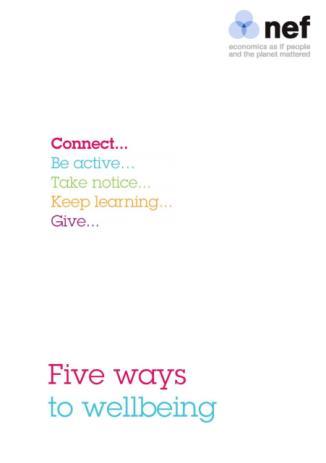
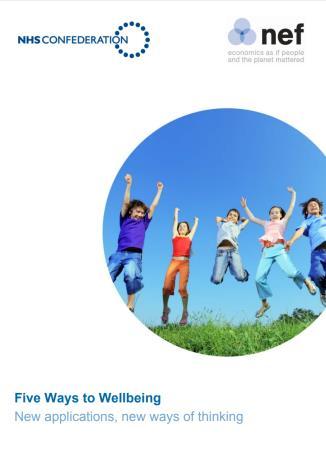



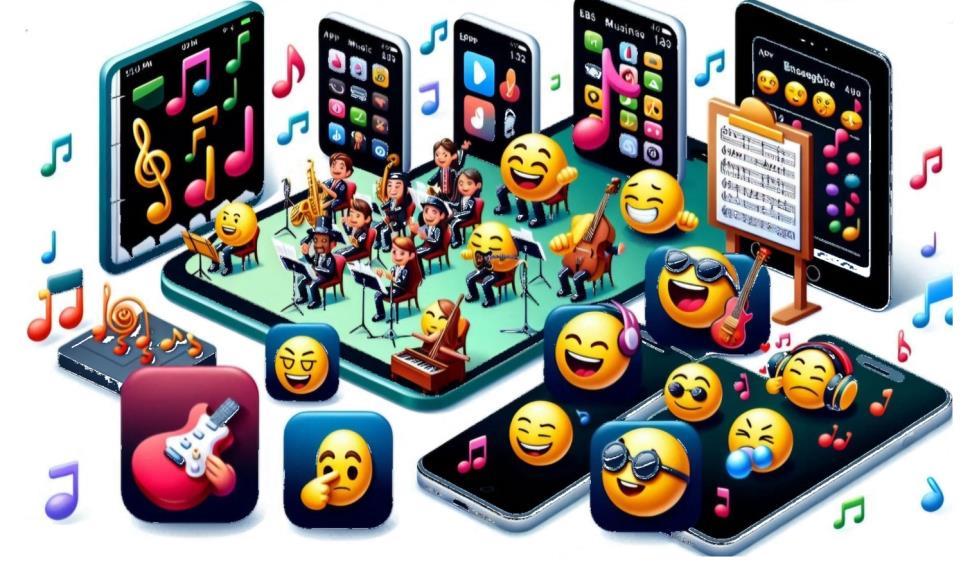
The advent of AI, apps, and LMS software presents significant opportunities for advancing music making well-beings.
Key areas include:
1. Benchmarking Music Making Well-Being: Utilizing technology to measure and track the impact of music making on wellness.
2. Personality-Based Music Teaching and Learning: Adapting teaching methods to suit individual learning styles and personality types.
3. Multi-Sensory Musical All Abilities and Specific Dysmusia Tools: Developing tools to aid those with dysmusia and other sensory, mental, physical, emotional, and intellectual challenges in the complex world of music making.
4. Personalized Teaching, Tutoring, and Learning: Leveraging technology to offer tailored music education experiences visual, auditory, kinesthetic fun, colorful, simple, easy, engaging, exciting, genre-based, academic-level-based, and above all, wellbeing-based.
5. Assistive Learning Tools: Creating tools and teaching aids, such as classroom color sheet music and instruments, to support neurodiverse learners in achieving their musical potential.
By integrating these elements, "Wellenomics of Music Making Well-Beings" provides a comprehensive roadmap for harnessing the transformative power of music making. It aims to inspire a global movement that not only realizes significant economic opportunities but also fosters a profound and lasting impact on individual and collective wellbeing.
You are invited to join the choir singing out the future of music making wellness as a global sector and local well-beings everywhere.


A Summation Of A Lifetime Of Frustration A Passion For Communication

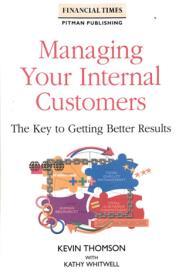

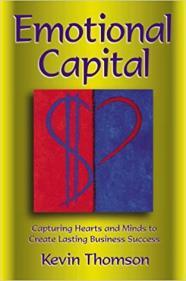

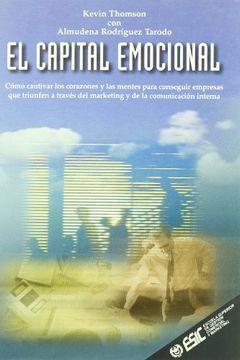
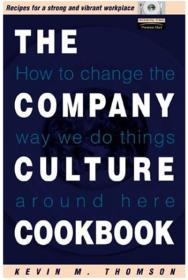

The Dyslexic Dysmusic Mind Of A Dynamic ENTP Dysruptor!

Integrating Music Making into the Global Wellness Institute Definitions The C 21st Neuroscience & Social Neuroscience Revelations – For Us All!
Physical: Nourishing a healthy body through exercise, nutrition, sleep, etc.
- With Music Making: Engaging in physical activities such as playing instruments or dancing to music enhances coordination, motor skills, and overall physical health.
.
Environmental : Fostering positive interrelationships between planetary health and human actions, choices, and wellbeing.
- With Music Making: Music making can raise environmental awareness through community events and sustainabilitythemed music projects, promoting a harmonious relationship with nature.
Mental: Engaging the world through learning, problem-solving, creativity, etc.
- With Music Making: Learning to play an instrument, composing music, or participating in music-related activities stimulates cognitive functions and fosters creativity.

Social: Connecting and engaging with others and our communities in meaningful ways.
- With Music Making: music activities, such as bands, choirs, and community music events, strengthens social bonds and fosters a sense of belonging.
Searching for meaning and higher purpose in human existence.
- With Music Making: Music making can be a spiritual practice that offers a sense of purpose, connection, and fulfilment, and can be incorporated into meditative and reflective practices.
Emotional: Being aware of, accepting, and expressing our feelings, and understanding the feelings of others.
- With Music Making: Music making provides an outlet for emotional expression, helps process feelings, and enhances emotional resilience.
Musical: Enhancing overall wellbeing through active engagement in music making.
- Definition: Music making integrates physical, mental, emotional, spiritual, social, and environmental wellness, providing a comprehensive approach to lifelong health and happiness. Engaging in music making activities, whether individually or in groups, promotes overall wellbeing by fostering creativity, emotional expression, social connections, and a sense of purpose.

By redefining wellness to include music making as an integral element, we recognize the multifaceted benefits of music across all areas of health. This holistic approach to wellness underscores the transformative power of music making, promoting a balanced and enriched life.


Introduction to this Report Recommending to the Board & Members Global Wellness Institute
To Help Build & Champion Music Making As a Core Global Wellness Strategy
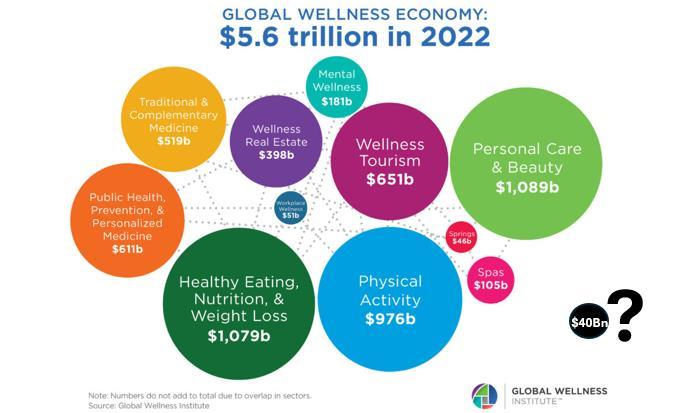
While the GWI rightly champions Music Therapy as a component of wellness, this is, in reality, an expert driven mental health intervention (requiring Masters Level MA in the UK) and is, de facto - for helping the often-critical, disability and illness driven ‘un-Wellness of un-Well-Beings’. By default, this is a tiny sub-sector in the Global Wellness Economy. Link To (limited) Music Therapy Section GWI.
Current GWI Focus – 6 Sectors – Not Musical
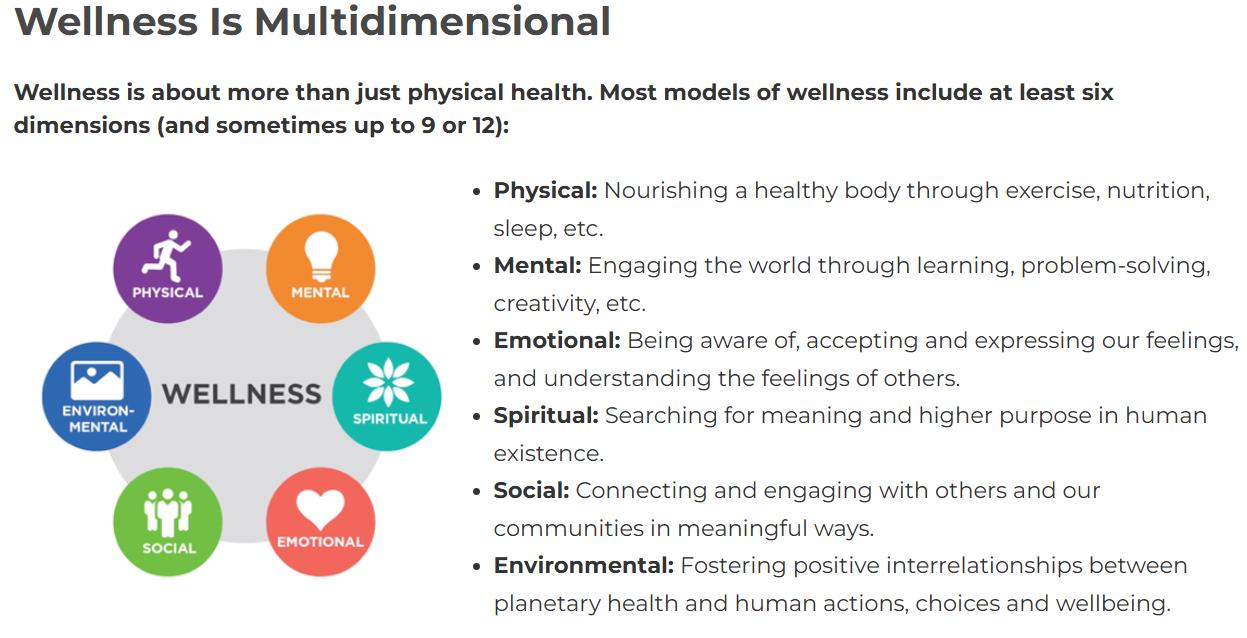
• Music Making – Not Just Listening Is A Universal Language, Integrational in All Wellness Type Activates - Multi-Functional In Output Making Well-Beings + Helping Un-Well-Beings toward being Well-Beings – for all ages, for all abilities, for all physical, metal and intellectual levels - for life.


Introduction to this Report
Recommending to the Board & Members
Global Wellness Institute
To Help Build & Champion Music Making As a Core Global Wellness Strategy
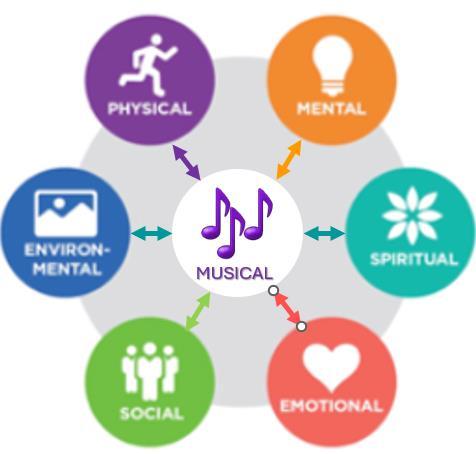
This document highlights why Music Making not just listening or therapy for unWellbeings— by creating and sustaining music throughout life for Well-Beings and reimagined for un-Well-Beings is critical. It proposes music making – not just listening - as a new and potentially the 12th sector in addition to the GWI 11 - with an estimated potential of a NEW $40 billion Sector – and even more importantly to fulfil the GWI core goal of wellness for a – the is a $1tn Economic, Social, Health and Wellbeing Potential Global Output (CHATGPT estimates). This initiative is intended to encompass members and the numerous sectors described herein as a key factor, focus, and initiative.
The Global Wellness Institute (GWI) stands at the forefront of shaping wellness trends and practices worldwide. As the understanding of wellness evolves, it becomes imperative to expand our definition and incorporation of foundational activities that foster holistic health. Among these, music making emerges as an essential wellness practice, possessing unparalleled potential to impact human health and societal well-being profoundly. Therein lies a compelling rationale for GWI to champion music making as the single most important activity for comprehensive wellness enhancement.
Research increasingly shows that music making is a powerful catalyst for cognitive development. Highlighted by Anita Collins in her TED Talks on 'Music and the Brain,' music activates, engages, and exercises the brain more completely than any other activity. This brain-building capability positions music making not merely as an educational tool but as a vital component of cognitive health. By promoting music making, GWI can lead the agenda of not just learning through music but thriving through it.

Economic Model AI - Integrating With All 11
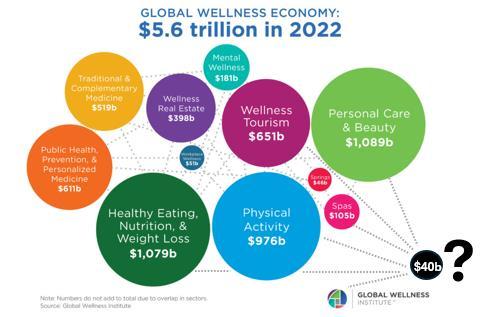
By KMT + AI


Background - To This Independently Created Addendum to ‘Wellenomics’ Sponsored research by The Dysmusia.Foundation, Proposed New GWI Toolkit Discussion Document to..
’reset the world with - music making- wellness’
From the AI-generated size and opportunity for a new Music Making GWI 12th Wellness Sector outlined in Kevin M Thomson’s new book ‘Wellenomics of Music Making Well-Beings’ came the inspiration for Kevin to follow through with a proposed 7th Wellness Policy Toolkit – also AI generated from the similarly focused GWI Physical Activity Toolkit. The purpose of this, as an addendum to the book, is to highlight the route and framework to this missing opportunity of what all the evidence now says could be … …the single most important advance and increase in global wellness - music making. This document aims to inspire others to help reframe the framework.
This Proposed Toolkit framework and content establishes music making as the 7th Wellness Policy Toolkit Activity in its own right: Yet it also significantly contributes to each of the current 6 core GWI measures of Physical, Mental, Spiritual, Emotional, Social, and Environmental wellness. This addition and integration is the first ‘Key’ power of music making wellness.
Outlined in this proposed Toolkit are the recent advances in 21st-century neuroscience. These advances have uncovered the deeply significant, powerful double health & wellness benefits of music making. The evidence reveals that these benefits span across all sectors of the wellness industry – not just making a sector of its own. This is the second ‘Key’ power of this wellness attribute, adding to and integrating ideas, actions, and people with one unifying force…to reset the world with music making wellness. Making everyone a ‘Wellsician’!
This proposed Toolkit, as an addendum to the Wellness Economy-based book ‘Wellenomics of Music Making Well-Beings,’ sets out to demonstrate, as a starting point for discussion, how to integrate and implement these insights across all 11 Economic sectors. It demonstrates how music making - not simply music listening or music therapy - can be a cornerstone of both holistic well-being and wellness, as separately defined by the GWI.
Recent discoveries in neuroscience reveal that music making fosters cognitive development, enhancing brain functions that support learning, memory, and emotional regulation. Additionally, the latest findings in social neuroscience show that music making significantly improves relational wellness, promoting social connections and community building.
Furthermore, globally evidenced research from the nef (New Economics Foundation) and the UK Government Foresight project ‘The 5 Ways to Wellbeing’ shows how these…principles can be applied to music making, creating a framework for Music Making Wellbeing for all ages and SEND difficulties, age and other health and physical disabilities.
The newly created Dysmusia Foundation, born out of the need to highlight this virtually unheard of SEND phenomenon, through its sponsorship of the YouGov Music Making Wellbeings UK Benchmark, aims to provide an example of how to measure and promote these benefits. This Music Making Well-Beings Toolkit provides a framework for including core components into other measures like Employee Satisfaction Surveys, Social & Healthcare Measures thus giving alternatives to the 5 Ways To Wellbeing (as used by many UK & international organizations like the NHS). The aim – to generate a robust data-driven foundation for integrating music making into wellness policy and to drive global wellness strategies, practices, programmes & research.
This document serves as a call to action for the global wellness community to recognize and leverage the profound impact of music making. By integrating music making into wellness initiatives, we can unlock new potential for enhancing individual and collective health, creating a comprehensive approach to well-being that includes cognitive, emotional, social, and physical health benefits.




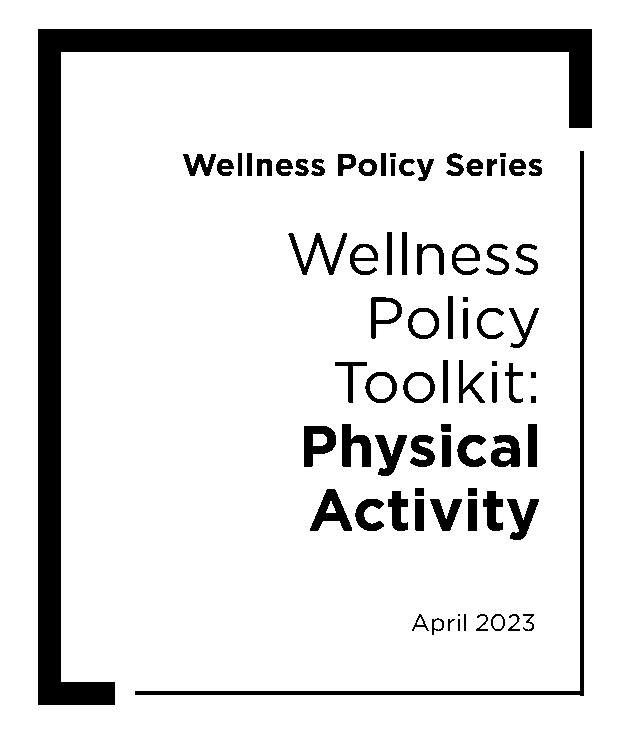
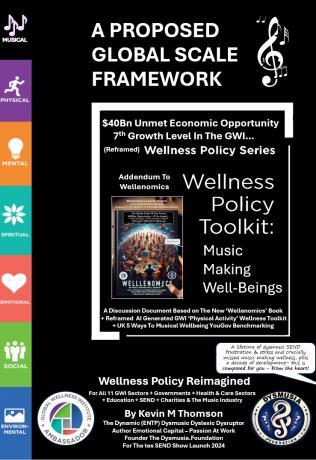
Prepared By Kevin M Thomson



If the neuroscientists are right this is my most important statement - ever…
“Music Making –not listening- is the single most significant Wellness Initiative anyone, any organisation, any government or our world can take”
From Kevin M. Thomson, The Dynamic (ENTP) Dysmusic Dyslexic Dysruptor!
Author Emotional Capital, Passion At Work, The Company Culture Cookbook Global Wellness Ambassador Founder – The Dysmusia Foundation – Sponsoring This Discussion Document
Greetings, fellow wellness and/or music-making enthusiast!
I’ve spent a lifetime grappling with the stresses associated with SEND (Special Educational Needs and Disabilities), and I recently added my own and updated understanding of ‘Dysmusia’. These neurological and dyspraxic physiological challenges, combined with the external complexities of learning and playing music, were unknown to me from a young age but are now recognized globally (except dysmusia!) as barriers to fully engaging in the world of music making.
These personal challenges illuminated a significant (really, really big!) missed opportunity: the incredible potential of music making as a tool for well-being in a new global wellnessaware world a world mostly unaware of how to make music making (not just listening or music therapy) the largest untapped wellness opportunity we can create starting today.
With the vast body of research what I call ‘Music Making Rooted In Science' highlighting the neuroscience of both cognitive development and, more recently, the ‘Social Neuroscience’ of making connections through music making (the no. 1 of the 5 Ways To Wellbeing – see my model below) -it is clear that music is not just an art form but a profound and, significantly… THE single, and joint with every sector, most powerful avenue for improving health and wellness –ever? Read on. Make your own mind up.
Cont..


If the neuroscientists are right this is my most important statement - ever…
“Music Making –not listening- is the single most significant Wellness Initiative anyone, any organisation, any government or our world can take”
Cont..
My passion and goal are to instigate a transformative shift in how the global wellness community leverages music making. This document, inspired and transformed as a template from the GWI Physical Activity Toolkit, provides the ‘How to...’ as a toolkit to the ‘How much?’ of the AI estimated in my Wellenomics sister book, revealing a new potential $4Bn opportunity and, more critically, a $1Tn impact on our global health and wellness landscape.
I hope that this proposed document will:
1. Make you think about the untapped potential of music making in promoting well-being.
2. Make you believe in the power of music to transform lives.
3. Inspire you to act and incorporate music making into wellness initiatives.
4. Encourage you to deliver programs and policies that make music making accessible to all.
5. Ultimately, ensure that you and those you care for are not just part of the 20% SEND or the 90% who never tried or gave up, but part of the potential 100% who, regardless of skill level from playing a simple 4 Chord Trick to performing at the Royal Albert Hall become "Wellsicians."
My single simple (yet BIG BOLD) goal with this proposal and discussion document is to inspire you to join me on this journey to harness the holistic benefits of music making, fostering a world where everyone can experience the joy and well-being it brings. Together, we can transform lives through the universal language of music a language we can make into a language of wellness and a tool for making well-beings for every age, young to old, every ability, whether SEND disabled or not, every capacity, academic or physical, and every achievement level desired, from playing for fun, playing by ear, or playing for exams to Grade 8 and beyond for a career.
Warm regards,
Kevin M. Thomson


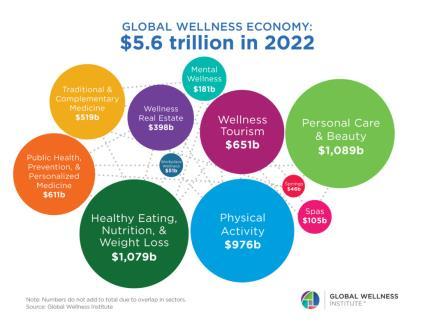


Expanding the Concept of Wellness in Music
Creating a new Sector Global Opportunity & Impact Adding The 7th Sector Of Music Wellness Policy Toolkits
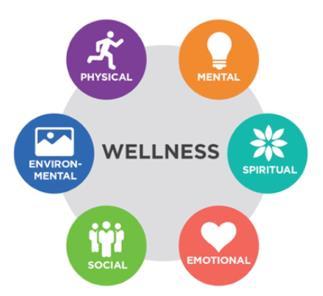

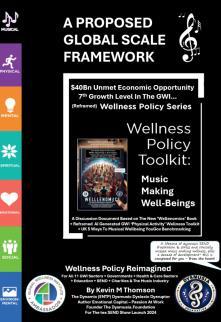

The "Wellenomics of Music Making Well-Beings" concept proposes the establishment of a 12th sector within the Global Wellness Institute (GWI), dedicated to the profound impact of music making on global wellness. This initiative is grounded in recent advances in neuroscience, highlighting the cognitive and social benefits of music making. The potential of this new sector is both vast and transformative, with an estimated $4 billion opportunity and a $1 trillion impact on the wellness of individuals worldwide.
Cognitive Development and Social Neuroscience:
Research in cognitive neuroscience has demonstrated that music making significantly enhances brain functions such as learning, memory, and emotional regulation. Additionally, social neuroscience reveals that engaging in music making fosters deep social connections and community building, making it the number one activity for improving relational wellness as per the nef/UK Government Foresight project’s "5 Ways to Wellbeing".
Addressing Dysmusia:
The Dysmusia Foundation, through its YouGov UK Benchmark, has highlighted the widespread prevalence of Dysmusia, a multi-sensory SEND phenomenon. This condition affects both those with recognized special educational needs and the broader population who face challenges with music making. The Foundation's efforts aim to raise awareness and provide resources to support those affected, ensuring that music making is accessible to all.
Integration Across Wellness Sectors:
The proposed sector would not only stand alone but also integrate with the existing GWI sectors, enhancing physical, mental, spiritual, emotional, social, and environmental wellness. Music making is positioned as a versatile tool that can be incorporated into various wellness initiatives, from corporate wellness programs to educational curricula and community health projects.
Economic and Social Impact:
By establishing music making as a core wellness activity, this sector could generate substantial economic benefits through increased productivity, reduced healthcare costs, and enhanced employee satisfaction. Socially, it promises to foster inclusivity, creativity, and emotional resilience, contributing to a healthier, more connected global population.
In summary, the "Wellenomics of Music Making Well-Beings" concept advocates for the recognition of music making as a critical component of global wellness, capable of delivering extensive economic and social benefits, and paving the way for a healthier and more harmonious world.


Background - A New Definition of Music Making Well-Beings:
Expanding the Concept of Wellness in Music
Creating a new Sector Global Opportunity & Impact
Adding The 7th Sector Of Music Wellness Policy Toolkits
When we discuss wellness in the context of music, it's important to recognize that this concept extends far beyond traditional education. The Global Wellness Institute states that wellness is defined as the "active pursuit of activities, choices, and lifestyles that lead to a state of holistic health." This dynamic definition emphasizes that wellness is not a passive state but an ongoing, active process that involves intentional choices and actions aimed at achieving optimal health and well-being.
The Scope of Music Making Wellness
Music making wellness is an inclusive concept that encompasses all forms of engagement with music be it through pedagogy, playing instruments, performing in various settings, or simply enjoying music as a listener. This approach acknowledges that wellness:
1. Transcends Age and Ability: Whether for young children in their formative years, adults seeking a creative outlet, or seniors using music as a cognitive exercise, music making can be tailored to benefit all ages and abilities.
2. Encompasses All Academic Levels: From beginners learning the basics of rhythm and melody to advanced scholars analysing complex compositions, music making promotes mental and emotional health across all academic achievement levels.
3. Involves Various Modalities: Wellness through music isn't just about playing or listening it's also about understanding music's impact on us, creating music, sharing music with others, and learning about different musical cultures and practices.
Expanding Wellness through Music Making
Music making as a wellness activity is holistic. It nurtures the mind with intellectual stimulation, the body through the physical act of playing instruments or dancing, and the spirit by providing emotional release and connection. This holistic impact is evident in several key areas:
1. Emotional and Psychological Benefits: Music can soothe anxiety, elevate mood, and provide an outlet for expression, serving therapeutic roles that contribute to emotional stability and resilience.
2. Cognitive Advantages: Engaging with music has been shown to improve memory, attention, and reasoning skills. For students of all ages, music education can enhance academic performance by fostering better focus and cognitive flexibility.
3. Social Connectivity: Music making often involves collaboration, whether in bands, orchestras, choirs, or informal groups. This collaboration builds community and supports social interaction, which is vital for psychological health.
4. Physical Health: Playing music can improve hand-eye coordination, respiratory control, and even fine motor skills. For listeners, the rhythmic aspects of music encourage movement and dance, which contribute to physical fitness.
Conclusion
Defining music making as a form of wellness allows us to recognize and harness its full potential to improve quality of life. It encourages us to see music not just as a form of entertainment or education, but as a vital component of a healthy lifestyle. By embracing music making in all its forms from the classroom to the concert hall we can promote a holistic approach to health that benefits individuals and communities alike, making wellness through music accessible to everyone, regardless of age, ability, or academic level.

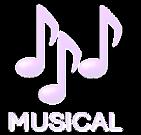
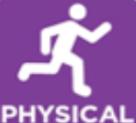





A "Wellsician" is an individual who harnesses the power of music making singing, playing, performing, and learning across all ages and abilities, for its profound wellness and wellbeing benefits.
Unlike traditional views that emphasize music for pleasure, performance, or therapy, a Wellsician integrates music into daily life as a holistic practice for enhancing overall health.




From a wellness standpoint, a Wellsician engages in music making as a proactive measure to maintain and improve physical, mental, and emotional health. Playing an instrument or singing provides physical exercise, fine-tunes motor skills, and enhances cognitive functions such as memory and problem-solving.
The act of making music stimulates creativity and offers a meaningful way to engage the mind, thus preventing cognitive decline and promoting lifelong learning.
From a wellbeing perspective, a Wellsician recognizes music making as a key activity for achieving emotional balance, social connection, and spiritual fulfilment.
Music making provides a powerful outlet for emotional expression and stress relief, fostering resilience and mental health. It also strengthens social bonds and creates a sense of community, essential for feeling supported and valued.
Spiritually, engaging in music can offer a deeper sense of purpose and connection to something greater.


By embracing music making not just for its traditional roles but as a cornerstone of wellness and wellbeing, Wellsicians lead a balanced, enriched life, contributing to a healthier and more connected society.




Challenges: The physical wellness sector faces the complex issue of rising obesity rates and related chronic diseases, largely driven by sedentary lifestyles and poor dietary habits. Encouraging lifelong physical activity is challenging due to a lack of infrastructure, socioeconomic barriers, and cultural attitudes towards exercise.
Opportunities with Music Making: Music making can contribute to physical wellness by incorporating movement through activities like dancing and drumming, which are enjoyable and engaging forms of exercise. Community music events can also provide a fun, inclusive environment that encourages physical activity, especially for those who may not engage in traditional exercise.
Challenges: The mental wellness sector struggles with the stigma surrounding mental health issues, limited access to mental health services, and insufficient integration of mental health into primary care. There is also a need to address the high prevalence of stress, anxiety, and depression.
Opportunities with Music Making: Music making has been shown to reduce stress, anxiety, and depression by promoting relaxation and emotional expression. Group music activities can provide social support and reduce feelings of isolation. Music therapy can be integrated into mental health treatment plans to enhance patient outcomes.
Challenges: Faith denominations face challenges related to maintaining moral and ethical standards, fostering community engagement, and addressing diverse spiritual needs. There is also the issue of declining participation in traditional religious activities.
Opportunities with Music Making: Music making can enhance spiritual wellness by providing a medium for expression and connection. Singing hymns, playing instruments, and participating in musical worship can deepen spiritual experiences and foster a sense of community. Music can also be a powerful tool for outreach and engagement, attracting younger generations to spiritual practices.

Challenges: Emotional wellness is hindered by a lack of emotional literacy, difficulty in managing stress and emotions, and limited access to resources that support emotional health. There is also a need for more programs that build resilience and emotional intelligence from a young age.
Opportunities with Music Making: Music making can enhance emotional wellness by providing an outlet for emotional expression and stress relief. Learning and performing music can boost self-esteem and confidence. Group music activities also offer a supportive environment where individuals can share experiences and emotions.
Challenges: The social wellness sector faces issues such as social isolation, lack of community cohesion, and barriers to inclusive participation. These challenges are often exacerbated by socioeconomic disparities and cultural differences.
Opportunities with Music Making: Music making fosters social connections and community cohesion through group activities like choirs, bands, and community music events. It provides a shared interest that can bridge cultural and social divides, promoting inclusivity and mutual understanding.
Challenges: The environmental wellness sector deals with issues related to sustainability, access to clean and safe environments, and the impact of climate change on health. There is also the challenge of engaging communities in environmental stewardship.
Opportunities with Music Making: Outdoor music events and festivals can promote environmental wellness by encouraging people to spend time in nature. Music can also be used to raise awareness about environmental issues and inspire action. Sustainable practices can be incorporated into music making, such as using eco-friendly instruments and hosting zero-waste events. Cont…

Challenges: Emotional wellness is hindered by a lack of emotional literacy, difficulty in managing stress and emotions, and limited access to resources that support emotional health. There is also a need for more programs that build resilience and emotional intelligence from a young age.
Opportunities with Music Making: Music making can enhance emotional wellness by providing an outlet for emotional expression and stress relief. Learning and performing music can boost self-esteem and confidence. Group music activities also offer a supportive environment where individuals can share experiences and emotions.
Challenges: The education sector faces challenges in integrating holistic wellness practices into the curriculum, addressing diverse student needs, and overcoming budget constraints. There is also a need to combat rising stress and mental health issues among students.
Opportunities with Music Making: Music education can play a crucial role in developing cognitive, emotional, and social skills. Schools can incorporate music into the curriculum to enhance learning and provide a creative outlet for students. Music programs can also foster a positive school culture and support student wellbeing.
Challenges: Governments must address public health crises, provide equitable access to wellness resources, and implement policies that promote overall wellbeing. Balancing budget constraints and meeting diverse population needs are significant hurdles.
Opportunities with Music Making: Governments can support music making through funding for community music programs, public music education, and music therapy in healthcare. Music initiatives can be part of public health campaigns to improve mental and physical health outcomes. By fostering a culture that values music, governments can enhance national wellbeing and cultural richness.
The integration of music making into wellness policies offers a unique and effective approach to addressing the complex challenges faced by various sectors. By leveraging the benefits of music, we can create a more inclusive, engaging, and holistic framework for global wellness. The Proposed Wellness Policy Toolkit: Music Making serves as a foundational guide for developing strategies that utilize music to enhance wellbeing across all sectors, ultimately fostering a healthier, happier, and more connected world.

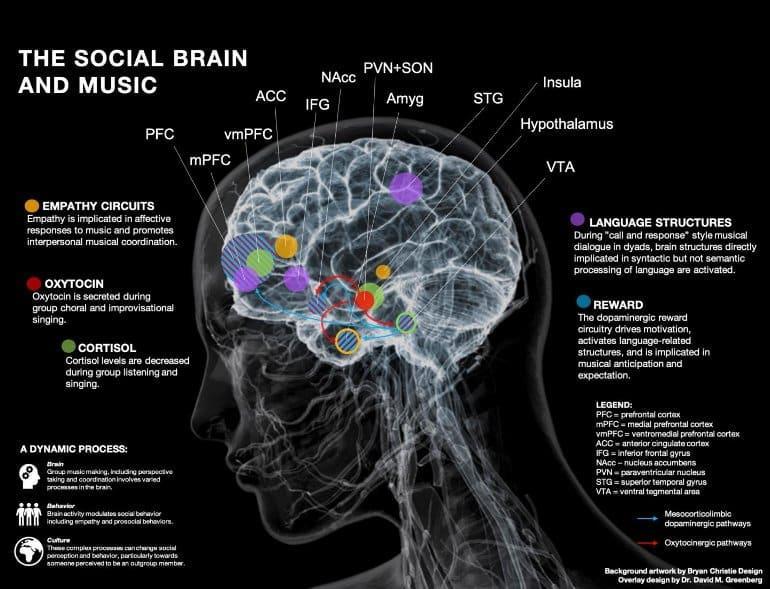
Recent advancements in the social neuroscience of music making provide groundbreaking insights into its profound impact on mental health. This burgeoning field illustrates that music making is deeply woven into the fabric of human existence, serving crucial social functions that extend beyond mere entertainment. These findings explore how music making enhances empathy, strengthens social bonds, and elevates our collective emotional state, presenting a robust case for integrating music making into routine wellness practices.
The team at Bar-Ilan and Chicago University, as reported in Neuroscience News, fused the latest advances in social neuroscience and the field of music, including evolutionary theory. They synthesized these advances and highlighted five key functions and mechanisms of the brain that contribute to social connection through music:
1. Empathy circuits
2. Oxytocin secretion
3. Reward and motivation, including dopamine release
4. Language structures
5. Cortisol
Each and every one of these is core to any wellness activity and intervention. Taken together, we now recognize the importance of music making as a critical wellness lifelong activity.

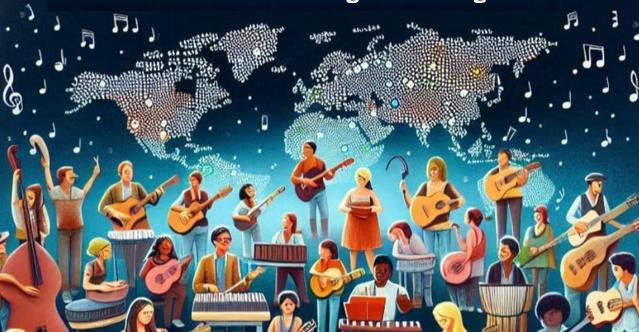
Music therapy has long been recognized for its effectiveness in various therapeutic settings, aiding individuals with a wide range of psychological and physiological conditions. As GWI seeks to broaden its influence in the healthcare sector, advocating for music making as a therapeutic modality can bridge the gap between traditional health treatments and innovative wellness strategies. This approach not only offers relief and recovery for those who are un-well but also introduces preventive measures that underscore the therapeutic power of music.
GWI's strategic advantage lies in its ability to facilitate integration across diverse sectors. Championing music making can lead a unifying effort that aligns the music, education, research, health, and wellness sectors around a common goal: to harness the intrinsic value of music for enhancing life quality. This collaboration would catalyze a multidisciplinary approach to wellness, combining insights and practices to create comprehensive wellness solutions.
From an economic perspective, advocating for music making is visionary and pragmatic. The potential to unlock a new $40 billion segment within the wellness market provides substantial economic incentives for businesses, educators, healthcare providers, and policymakers. This financial perspective underscores the vast, untapped potential of music making as a wellness strategy, providing GWI and its stakeholders a significant opportunity for growth and impact.


Championing music making aligns seamlessly with GWI’s mission to empower wellness worldwide.
By advocating for music making as the single most important thing any individual can do for their cognitive development, mental health, therapeutic needs, and overall well-being, GWI can lead a transformative shift in how wellness is perceived and practiced globally.
This strategic focus not only enriches individual lives but also enhances community well-being and drives substantial economic growth, making it a quintessential pursuit for the future of global wellness.
The vital importance of this initiative is clear for all those involved in the wellness sector, offering core potential for clients and customers.
Moreover, by engaging these individuals as Music Making Well-Beings Ambassadors, they can further propagate the message, extending the reach and impact of this movement, and ensuring its sustainability through community-driven advocacy and participation..

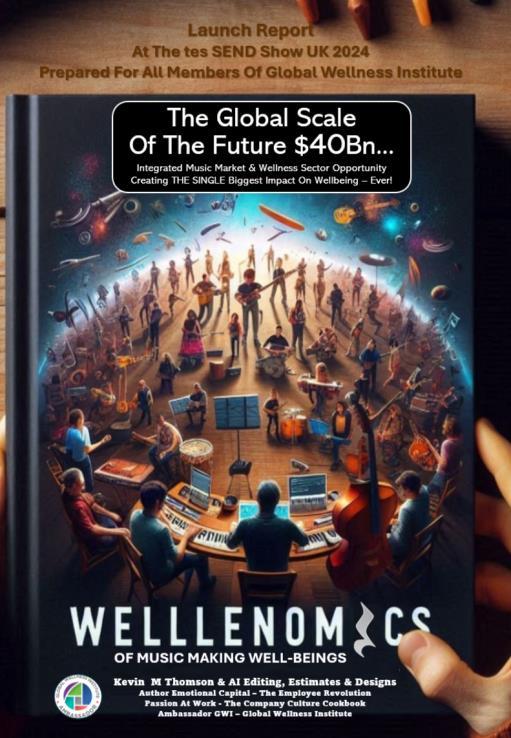

Introduction

The integration of music making as a central pillar in the wellness economy holds the potential to revolutionize global health and well-being. By embedding music making into the fabric of our daily lives and across all 11 wellness sectors, we can unlock substantial economic and societal benefits. Here, we provide an estimate of the economic impact of this $40 billion initiative, based on current scientific evidence and potential outcomes.
Economic Impact:
- Enhanced Educational Outcomes: Music making has been shown to improve memory, attention, and problem-solving skills. Improved cognitive abilities across the population can lead to better educational achievements, which in turn can enhance career prospects and economic productivity.
- Evidence: Studies, such as those conducted by the University of Amsterdam, have demonstrated that children who engage in music education score higher in IQ tests and show greater cognitive development compared to their peers.
Estimated Impact:
- Potential increase in global GDP by 1-2% due to improved educational outcomes and workforce productivity.
Economic Impact:
- Reduced Healthcare Costs: Lower stress and higher happiness levels can decrease the incidence of mental health issues such as depression and anxiety, reducing the overall burden on healthcare systems.
- Evidence: Research published in the Journal of Positive Psychology shows that music can significantly increase subjective well-being and reduce stress levels.
Estimated Impact:
- Potential savings in global healthcare expenditure by 3-5%, translating to hundreds of billions of dollars annually.
Economic Impact:
- Enhanced Community Engagement: Music making fosters social connections and cohesion, reducing societal tensions and fostering a sense of community.
- Evidence: A study by the University of Oxford found that group singing and music making can significantly enhance social bonding and trust among participants.
Estimated Impact:
- Potential reduction in societal costs associated with crime and social unrest by 1-3%, leading to a more stable and productive society.


Economic Impact:

- Increased Physical Activity: Music making, particularly in groups, encourages physical movement and reduces sedentary behavior, contributing to better mental and physical health.
- Evidence: Research from the American Journal of Public Health indicates that participation in music activities can reduce screen time and promote healthier lifestyles.
Estimated Impact:
- Potential increase in global productivity and reduction in healthcare costs related to sedentary lifestyle diseases by 2-4%.
Economic Impact:
- Improved Physical Health: Engaging in music making can lead to hormonal benefits such as increased endorphins and oxytocin, contributing to overall physical well-being.
- Evidence: Studies have shown that music making can stimulate the release of feel-good hormones, enhancing physical health and well-being.
Estimated Impact:
- Potential reduction in global healthcare costs related to chronic diseases by 2-3%, due to improved physical health.
Economic Impact:
- Reduction in Medication Use: As music making can serve as a therapeutic intervention, it can reduce the need for pharmaceutical treatments for mental health conditions and chronic pain.
- Evidence: The British Journal of Music Therapy has documented cases where music therapy significantly reduced the need for medication in patients with chronic conditions.
Estimated Impact:
- Potential savings in global pharmaceutical expenditures by 1-2%, translating to billions of dollars annually.
Economic Impact:
- Widespread Participation: With a high participation rate in music making, societal well-being can be substantially enhanced, leading to a more productive, creative, and harmonious society.
- Evidence: The YouGov analysis and nef Foresight Report highlight that regular engagement in music making can lead to sustained well-being and personal growth.
Estimated Impact:
- Potential increase in global economic productivity and societal health by 3-5%, with significant long-term benefits.



8. The Global Scale of Music Making Wellenomics: Societal, Community, Organizational, and Personal Health
Societal and Community Health
- Enhanced Community Engagement: Music making fosters social bonds, reducing social isolation and enhancing community resilience.
- Reduced Crime and Social Tensions: Greater social cohesion can lead to lower crime rates and reduced societal tensions.
Organizational Health
- Increased Workplace Productivity: Music making can enhance employee morale, creativity, and teamwork, leading to higher productivity.
- Reduced Workplace Stress: Integrating music into workplace wellness programs can reduce stress and improve overall employee well-being.
Personal and Family Wellbeing
- Improved Family Relationships: Music making as a family activity can strengthen bonds and improve emotional health.
- Holistic Personal Development: Engaging in music making promotes personal growth, emotional stability, and cognitive development.
Conclusion
Integrating music making into the global wellness economy holds transformative potential. By bridging the gaps between wellness sectors, the music industry, and scientific research, we can create a more inclusive, healthy, and prosperous society. The economic impact of these initiatives is substantial, with potential benefits across cognitive, emotional, social, and physical health domains. As we move forward, embracing music making as a core wellness strategy can lead to a brighter, more harmonious future for all.
Potential Wellenomic $ Impact on the Global Economy
Minimum Impact:
- Cognitive Development: 1% GDP increase
- Emotional Health: 3% healthcare savings
- Social Cohesion: 1% reduction in societal costs
- Mental Health: 2% productivity increase
- Physical Wellbeing: 2% healthcare savings
- Less Reliance on Drugs: 1% pharmaceutical savings
- Overall Societal Health: 3% productivity increase
Total Minimum Impact: $500 billion annually
- Cognitive Development: 2% GDP increase
- Emotional Health: 5% healthcare savings
- Social Cohesion: 3% reduction in societal costs
- Mental Health: 4% productivity increase
- Physical Wellbeing: 3% healthcare savings
- Less Reliance on Drugs: 2% pharmaceutical savings
- Overall Societal Health: 5% productivity increase
Total Maximum Impact: $1 trillion annually
By fully implementing music making well-being initiatives across all sectors, we could unlock an unprecedented economic and social transformation, contributing significantly to global prosperity and health.


Of Music Making as a Wellness Strategy
Double The Size of Music Sector? Is CHATgpt Right?
Introduction

Given the projected global music market value of nearly $20 billion by 2027, integrating music making and listening as recognized components of the wellness sector presents a significant opportunity. This analysis will estimate the potential size of this expanded market by exploring The 7 ‘Key!’ segments.
Music making involves active engagement in creating music, which includes learning, teaching, playing, and composing. As a wellness activity, music making can be integrated into educational curricula, community health programs, and personal wellness routines.
Estimate:- Educational and Community Programs: Incorporating music making into schools and community programs can potentially add $2 billion to the market, considering the enhancement of cognitive, emotional, and social benefits.
- Personal Wellness Routines: As individuals seek holistic wellness solutions, integrating music making could add another $1.5 billion by offering personal wellness kits, apps, and classes.
$3.5 billion
Expanding music therapy to include democratized music listening where not only professionals but anyone can learn and apply therapeutic techniques — could significantly broaden the market.
Estimate:- Home-Based Music Therapy Programs: With increasing accessibility through apps and online platforms, this could add approximately $1 billion.
- Widespread Clinical Adoption: If music listening + music making therapies are adopted more widely in clinical settings, this could add another $0.5 billion.
$1.5 billion
The Special Educational Needs and Disabilities (SEND) market, which makes up about 20% of the global population, is largely untapped in terms of tailored music wellness programs.
Estimate:- Specialized Programs for SEND: Creating programs specifically designed for SEND individuals could potentially add $2 billion to the market, given the need for customized educational and therapeutic music activities in this stress making exam driven environment; where there are no SEND specific music pedagogy solution – let alone SEND specific Wellness solutions through music making.
$2 billion



Approximately 90% of learners give up or never try due to various barriers. By removing these barriers and promoting music as a lifelong wellness activity, a significant market could be captured.
Estimate:
- Retention and Re-engagement Programs: Initiatives to retain learners and re-engage those who have given up could add approximately $3 billion to the market by providing supportive learning environments and resources.
Utilizing the 5 Ways to Wellbeing within the research, education, and care sectors presents another significant opportunity for market expansion.
Estimate: Wellbeing Programs in Education and Healthcare: Implementing music-based wellbeing programs could potentially add $2 billion, considering the growing recognition of music's benefits in these sectors.
Integrating music making and listening into the broader wellness market (valued at $5.6 trillion by the Global Wellness Institute) offers vast opportunities.
Estimate: Integration into Wellness Programs: This could conservatively add 0.5% of the wellness market, equating to approximately $28 billion, by integrating into existing health and wellness programs globally.
7. The Overall Potential Market Size – Recognized As Worth Investing
By summing these segments, the overall potential market size for music as a component of the wellness sector could be estimated at approximately $40 billion by 2027. This estimate illustrates the considerable opportunity for growth within the music and wellness industries, highlighting the need for strategic investment and development to capture this potential market.
(or is CHATgpt wrong!?) ….


The profound insights from Kasley Killam's *The Art and Science of Connection*, combined with the findings of the Longitudinal Harvard Happiness Study, highlight the pivotal role of relationships in achieving lifelong happiness. The Harvard study, which has tracked the lives of hundreds of individuals over decades, reveals that strong relationships not wealth or fame are the most significant predictors of happiness. Music making, with its inherent ability to foster connections, emerges as a powerful tool in building and sustaining these relationships.
Music making inherently involves collaboration and shared experiences, whether through playing in a band, singing in a choir, or engaging in group lessons. These activities foster deep connections, mutual understanding, and emotional bonding. Recent research in social neuroscience underscores the impact of music making on brain functions related to social connection:
1. Empathy Circuits: Engaging in music making activates empathy circuits in the brain, enhancing our ability to understand and share the feelings of others.
2. Oxytocin Secretion: Music making stimulates the release of oxytocin, a hormone associated with bonding and social connection.
3. Reward and Motivation: Music making triggers the release of dopamine, the brain's reward and motivation chemical, making social interactions more enjoyable and reinforcing positive social behaviors.
4. Language Structures: Music engages brain regions involved in language processing, enhancing communication and linguistic skills.
5. Cortisol Regulation: Music making helps regulate cortisol levels, reducing stress and promoting a sense of well-being.
These findings illustrate that music isn’t just mere entertainment; it is a core feature of human existence with important social implications. Music making strengthens relationships, promotes emotional well-being, and fosters a sense of community, making it a critical component of lifelong happiness.
Launching the Global Music Making Happy MiiNDS! Programme
Building on these insights, the Global Music Making Happy MiiNDS! (Music Inclusivity Individuality Neuro Diversity System!) Programme aims to harness the power of music making to promote global wellness through connections. This comprehensive initiative will encompass education, tracking, trending, skills development, and social media engagement, all grounded in the principles of the nef 5 Ways to Wellbeing and supported by the GWI's 11 sectors.
# Programme Components:
1. Education:
- Develop curricula and resources that integrate music making into educational systems worldwide, emphasizing its role in enhancing relationships and well-being.
- Offer professional development for educators to incorporate music making into their teaching practices.
2. Tracking and Trending:
- Implement tools to track and trend the impact of music making on individual and community well-being.
- Utilize AI to analyze data and provide personalized recommendations for improving social health through music making.
3. Skills Development:

The profound insights from Kasley Killam's *The Art and Science of Connection*, combined with the findings of the Longitudinal Harvard Happiness Study, highlight the pivotal role of relationships in achieving lifelong happiness. The Harvard study, which has tracked the lives of hundreds of individuals over decades, reveals that strong relationships not wealth or fame are the most significant predictors of happiness. Music making, with its inherent ability to foster connections, emerges as a powerful tool in building and sustaining these relationships.
Music making inherently involves collaboration and shared experiences, whether through playing in a band, singing in a choir, or engaging in group lessons. These activities foster deep connections, mutual understanding, and emotional bonding. Recent research in social neuroscience underscores the impact of music making on brain functions related to social connection:
1. Empathy Circuits: Engaging in music making activates empathy circuits in the brain, enhancing our ability to understand and share the feelings of others.
2. Oxytocin Secretion: Music making stimulates the release of oxytocin, a hormone associated with bonding and social connection.
3. Reward and Motivation: Music making triggers the release of dopamine, the brain's reward and motivation chemical, making social interactions more enjoyable and reinforcing positive social behaviors.
4. Language Structures: Music engages brain regions involved in language processing, enhancing communication and linguistic skills.
5. Cortisol Regulation: Music making helps regulate cortisol levels, reducing stress and promoting a sense of well-being.
These findings illustrate that music isn’t just mere entertainment; it is a core feature of human existence with important social implications. Music making strengthens relationships, promotes emotional well-being, and fosters a sense of community, making it a critical component of lifelong happiness.
Launching the Global Music Making Happy MiiNDS! Programme
Building on these insights, the Global Music Making Happy MiiNDS! (Music Inclusivity Individuality Neuro Diversity System!) Programme aims to harness the power of music making to promote global wellness through connections. This comprehensive initiative will encompass education, tracking, trending, skills development, and social media engagement, all grounded in the principles of the nef 5 Ways to Wellbeing and supported by the GWI's 11 sectors.
# Programme Components:
1. Education:
- Develop curricula and resources that integrate music making into educational systems worldwide, emphasizing its role in enhancing relationships and well-being.
- Offer professional development for educators to incorporate music making into their teaching practices.
2. Tracking and Trending:
- Implement tools to track and trend the impact of music making on individual and community well-being.
- Utilize AI to analyze data and provide personalized recommendations for improving social health through music making.
3. Skills Development:

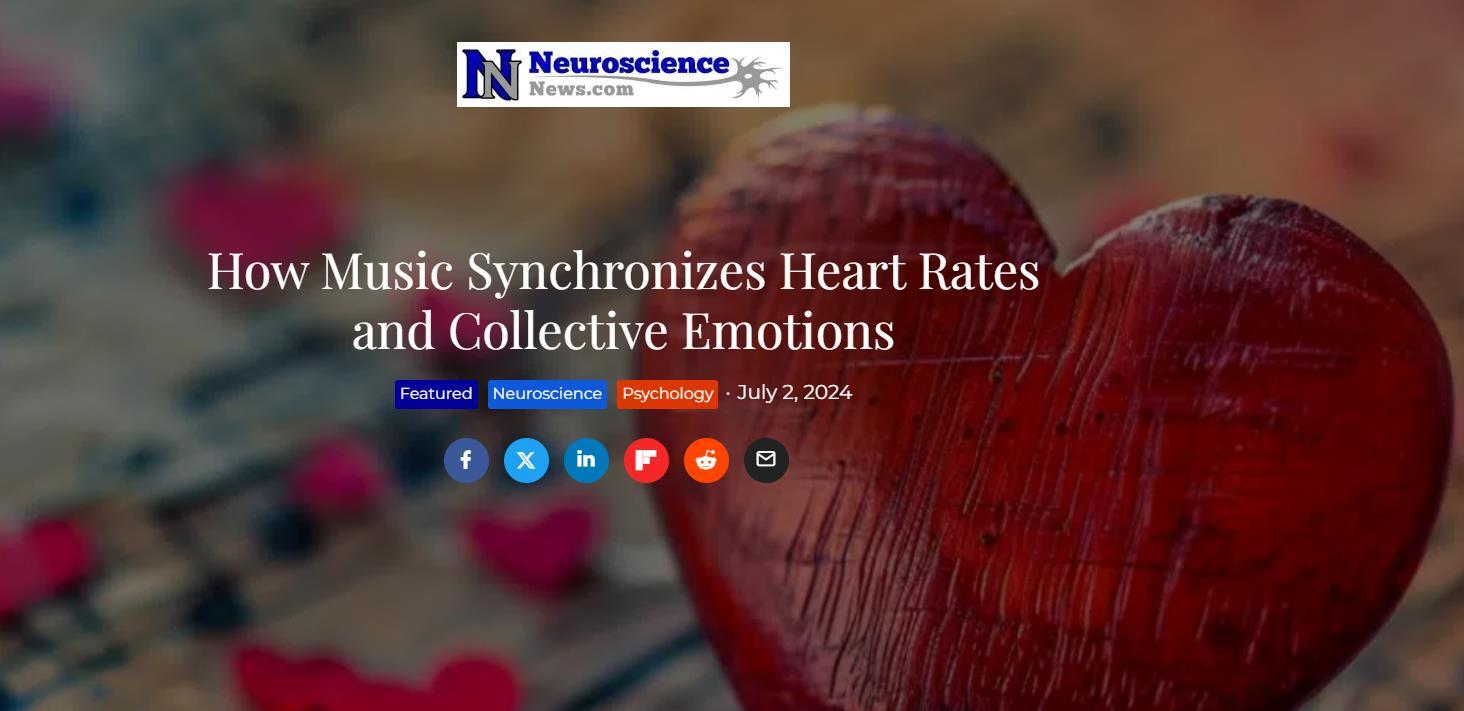
How Music Synchronizes Heart Rates and Collective EmotionsNeuroscience News




Health is not only physical or mental. Health is also social.
Social health is the aspect of overall health and well-being that comes from connection vastly underappreciated. Whereas physical health is about your body and mental health is about your mind, social health is about your relationships. Being socially healthy requires cultivating bonds with family, friends, and the people around you, belonging to communities, and feeling supported, valued, and loved in the amounts and ways that feel nourishing to you.
In Kasley Killam's book, *The Art and Science of Connection*, the profound ways in which human connection enhances our lives are explored in depth. Building on this content, we delve into how music making is the top way to deliver connection, integrating insights from the Wellenomics approach and the 5 Ways to Wellsician framework. Each of the 5 Ways to Wellbeing Active, Take Notice, Keep Learning, and Give plays a pivotal role in fostering social connection through music making, based on the UK Government research-based nef 5 Ways to Wellbeing.
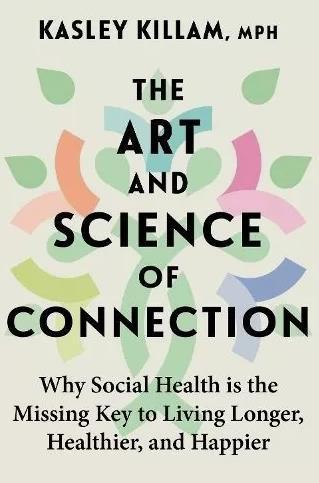
Music making inherently involves a myriad of collaborative and interactive experiences. Whether it's playing in a band, singing in a choir, teaching, tutoring, parenting, receiving examination feedback, writing music, or sharing discussions, these activities foster deep social connections and mutual understanding. Let's explore the top 20 ways music making delivers connection, enhancing social health:
# 1. Connect: Building Relationships Through Music
Music making inherently involves collaboration, whether it's playing in a band, singing in a choir, or jamming with friends. These shared experiences foster deep connections and mutual understanding. Talking about the music itself, the struggles to learn, and the joy of performing together are unique to music making.
- "Playing in our local band has helped me form friendships I never imagined. It's a beautiful way to bond over something we all love."
# 2. Connect: Emotional Bonding
Music has the power to evoke emotions and create shared emotional experiences. Performing and creating music together strengthens emotional bonds and empathy among participants. The process of discussing these emotions and experiences deepens connections.
- "Writing songs with my friends has been an emotional journey that has brought us closer than ever."
# 3. Connect: Cultural Connection
Music is a universal language that transcends cultural boundaries. Engaging in music making allows individuals to connect with diverse cultures and traditions, fostering inclusivity and understanding. Conversations about different musical styles and cultural significance enhance these connections.
- "Learning traditional songs from different cultures has opened my eyes to the richness of global music and created amazing connections."
# 4. Be Active: Physical Engagement
Playing an instrument or singing involves physical activity, which promotes well-being. The physical aspect of music making encourages active participation and enhances connection through shared physical experiences. Discussing practice routines and physical challenges adds another layer of connection.
- "Our choir practices are not just about singing; they're a great physical workout and a way to connect with my body and others."
# 5. Be Active: Group Activities
Participating in music-related group activities like dance, drumming circles, or marching bands enhances physical and social engagement, fostering a sense of community and belonging. The shared

Art and Science of Connection: Integrating Music Making into the GWI Wellness Philosophy
Kasley Killam's book, *The Art and Science of Connection*, provides profound insights into how human connection enhances our lives. These insights, when combined with recent research on the social, emotional, physical, and mental benefits of music making, highlight the potential for music making to become a core component of the Global Wellness Institute (GWI) Wellness philosophy. Every sector within the GWI framework can embrace and integrate music making in unique ways, contributing to the development of the Wellenomics Music Making Economy.
Music making fosters social connections through collaboration, shared experiences, and communal activities. Whether it’s playing in a band, singing in a choir, or participating in community music events, these activities strengthen social bonds and create a sense of belonging. Recent research in social neuroscience underscores the role of music in activating empathy circuits, releasing oxytocin, and enhancing communication skills. By integrating music making into their offerings, wellness sectors can enhance social health and build stronger communities.
- Example: Wellness tourism can incorporate music retreats where participants engage in group music making activities, fostering connections and creating memorable experiences.
Engaging in music making activities helps individuals process and express their emotions, leading to enhanced emotional well-being. The therapeutic benefits of music are well-documented, with music making shown to reduce stress, anxiety, and depression. Emotional bonding through music can be a powerful tool for wellness programs aimed at improving mental health.
- Example: Workplace wellness programs can include music therapy sessions or lunchtime music making groups to help employees manage stress and improve emotional health.
Playing an instrument or singing involves physical activity, which promotes overall physical health. The physical engagement required for music making can be beneficial for motor skills, coordination, and overall fitness. Moreover, the act of making music has been shown to regulate cortisol levels, reducing stress and promoting a sense of well-being.
- Example: Fitness centers and spas can offer music-based exercise classes or drumming circles, combining physical activity with the emotional and social benefits of music making.
Music making stimulates cognitive functions, enhancing memory, attention, and problem-solving skills. Learning to play an instrument or compose music encourages lifelong learning and intellectual engagement. This cognitive stimulation is particularly beneficial for older adults, helping to maintain mental acuity and delay cognitive decline.
- Example: Wellness real estate communities can offer music education programs and group music making activities to residents, promoting cognitive health and lifelong learning.
The recent research and insights into the benefits of music making align perfectly with the GWI Wellness philosophy, which emphasizes holistic well being. By incorporating music making into their programs, each sector within the GWI framework can enhance their offerings and contribute to the development of the Wellenomics Music Making Economy. Here’s how:
1. Mental Wellness: Offer music therapy and group music making sessions to improve mental health and foster social connections.

2. Physical Activity: Incorporate music-based exercise classes, drumming circles, and dance programs to promote physical health.

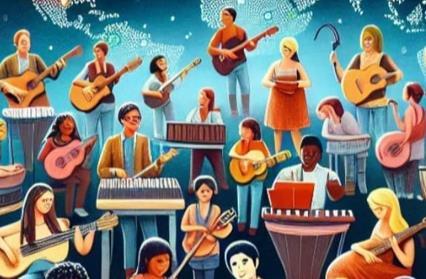
Exploring the economic impact of integrating music making into the global wellness industry offers an illuminating perspective on its potential. This chapter seeks to establish a foundational understanding of how music making, as an active participation in wellness, could substantially expand the market and enhance personal and communal health outcomes.
Music making encompasses activities such as playing instruments, singing, composing, and participating in music groups, all of which can significantly contribute to wellness. This chapter will quantify the potential market expansion by exploring music making's integration into educational programs and community health initiatives.
Estimate:
•Educational and Community Programs: Music making's integration into school curricula and community health initiatives could potentially add $2 billion to the market, driven by its cognitive, emotional, and social benefits.
•Personal Wellness Routines: As individuals increasingly seek holistic approaches to wellness, integrating music making could contribute an additional $1.5 billion through offerings such as personal wellness kits, apps, and classes.
Subtotal: $3.5 billion
Conclusion
This chapter has laid the groundwork for understanding music making's role in enhancing global wellness and its potential to expand the economic landscape of the wellness industry. The integration of music making into educational and community programs highlights its vast potential to contribute to the wellness market.



The global music market, projected to approach $20 billion by 2027, presents a substantial economic opportunity that extends beyond traditional music consumption and performance. In this new era of wellness, where the emphasis on holistic health is ever-growing, the concept of 'Wellenomics' the economics of wellness—can be expanded to encompass the vast potential of music making as a core component of the wellness industry. This introduction sets the stage for exploring how music making can be integrated into various wellness-related sectors, ultimately enhancing both market size and public health outcomes.
Music making, traditionally seen as an artistic and educational activity, is now recognized for its profound benefits in cognitive development, emotional regulation, and social connectivity. By embedding music making into wellness practices ranging from individual routines to community programs the potential market expansion is not just possible but inevitable. This initiative redefines how we perceive and engage with music, transforming it from a passive to an active wellness strategy.
Beyond professional music therapy, democratizing music listening to make therapeutic techniques accessible to all can greatly expand its market and applicability. This approach involves simplifying the principles of music therapy for everyday use by individuals without specialized training, thereby broadening the reach and impact of music as a therapeutic tool.
The Special Educational Needs and Disabilities (SEND) market represents a significant portion of the global population traditionally underserved in terms of tailored music wellness programs. Addressing this segment can open new avenues for market growth and social impact, providing customized solutions that enhance quality of life and accessibility.


The Global Wellness Institute (GWI) can play a transformative role in recognizing and promoting music making as a vital component of the wellness industry. By leveraging its resources, network, and influence, GWI can facilitate significant developments in how music is integrated into wellness practices globally. Here are the top 20 changes or initiatives GWI could undertake, starting with a strategic Moonshot initiative:
1.Moonshot Calendar of Music Making Well-Beings-: Launch an ambitious initiative that sets annual goals and milestones for expanding the integration of music making into wellness practices globally, aimed at achieving significant breakthroughs by a set target year.
2.Conference Themes-: Dedicate themes at GWI conferences to music and wellness, including keynote speeches, panels, and workshops led by experts in music therapy, music education, and wellness.
3.Global Surveys-: Conduct regular global surveys to gauge public awareness and engagement with music making as a wellness practice.
4.Research Funding-: Allocate grants specifically for studying the impacts of music making on wellness, including mental health, physical health, and social connectivity.
5.Annual Reports-: Publish annual reports on the state of the Music Making Wellness Sector, highlighting trends, growth, and areas needing attention.
6.Wellness Metrics-: Develop and standardize metrics to assess the impact of music making on wellness, which can be used across the industry.
7.Best Practices Guidelines-: Establish and disseminate best practices for incorporating music into wellness programs, based on the latest research.
8.Certification Programs-: Offer certification for wellness professionals trained in integrating music making into their practice.
9.Innovation Challenges-: Host innovation challenges that encourage startups and technologists to develop new tools that facilitate music making for wellness.
10.Collaborative Projects-: Foster collaborative projects between wellness centers, music therapists, educators, and tech companies to develop new wellness solutions.
11.Educational Webinars and Workshops-: Provide educational resources such as webinars and workshops to teach wellness practitioners about the benefits of music making.
12.Policy Advocacy-: Work with policymakers to advocate for the inclusion of music making in public health initiatives and educational curricula.
13.Media Campaigns-: Launch media campaigns to raise public awareness about the benefits of music making for wellness.
14.Corporate Partnerships-: Encourage corporations to integrate music making into their employee wellness programs and track the outcomes.
15.Community Grants-: Offer grants to community centers and non-profits for developing local music making programs aimed at enhancing community health.
16.Networking Events-: Organize networking events that allow professionals from the wellness, education, and music sectors to form partnerships.
17.Youth Engagement-: Create youth-focused programs that promote music making as part of a healthy lifestyle from an early age.

18.Technology Integration-: Promote the integration of emerging technologies, like VR and AI, to create immersive music making wellness experiences.
Wellenomics Potential of The Music Making Global Market Opportunity
Exploring the Economic Landscape of Music Making as a Wellness Strategy

Approximately 90% of potential music learners give up or never attempt to engage deeply with music making due to various barriers. Targeting this group with innovative retention strategies and engaging programs could revolutionize the perception of music education, positioning it as a lifelong wellness activity essential for maintaining mental and physical health.
Given the $5.6 trillion valuation of the global wellness market by the Global Wellness Institute, incorporating music making and listening offers a lucrative opportunity for growth. By aligning music strategies with existing wellness frameworks, the potential for economic expansion is both vast and impactful.
The integration of music into the research, education, and care sectors, especially through frameworks like the 5 Ways to Wellbeing, presents opportunities for market growth and enhanced wellbeing outcomes. By utilizing music-based programs to address educational and health-related goals, the potential for innovation and improvement in these sectors is substantial.
The 'Wellenomics' of music making encapsulates a broad spectrum of economic opportunities that can significantly impact the global market and improve overall wellbeing. As this book unfolds, each chapter will delve deeper into how these segments can collectively transform the music industry and establish music making as a cornerstone of the global wellness economy.



Introduction
Exploring the economic impact of integrating music making into the global wellness industry offers an illuminating perspective on its potential. This chapter seeks to establish a foundational understanding of how music making, as an active participation in wellness, could substantially expand the market and enhance personal and communal health outcomes.
Music making encompasses activities such as playing instruments, singing, composing, and participating in music groups, all of which can significantly contribute to wellness. This chapter will quantify the potential market expansion by exploring music making's integration into educational programs and community health initiatives.
Estimate:
•Educational and Community Programs: Music making's integration into school curricula and community health initiatives could potentially add $2 billion to the market, driven by its cognitive, emotional, and social benefits.
•Personal Wellness Routines: As individuals increasingly seek holistic approaches to wellness, integrating music making could contribute an additional $1.5 billion through offerings such as personal wellness kits, apps, and classes.
Subtotal: $3.5 billion
Conclusion
This chapter has laid the groundwork for understanding music making's role in enhancing global wellness and its potential to expand the economic landscape of the wellness industry. The integration of music making into educational and community programs highlights its vast potential to contribute to the wellness market.
.



Chapter 2: Harmonies of Health - The Therapeutic Impacts of Music Making
Introduction
Building upon the economic foundations set in Chapter 1, this chapter delves into the specific therapeutic impacts of music making, exploring how active participation in music can significantly enhance mental and physical health.
Therapeutic Benefits of Music Making
Music making serves as a dynamic therapeutic tool with wide-ranging benefits, from mental health improvements to enhanced physical rehabilitation. This chapter explores these benefits in depth, supported by clinical research and case studies.
Estimate:
•Home-Based Music Therapy Programs: The rise of digital platforms has facilitated the expansion of music therapy into home settings, potentially adding approximately $1 billion to the market.
•Clinical Music Therapy: Broader adoption of music therapy in clinical settings could contribute an additional $0.5 billion to the market.
Subtotal: $1.5 billion
Conclusion
Music making's role as a therapeutic medium offers significant opportunities for market growth within the wellness industry. This chapter has highlighted how music therapy can be effectively integrated into home and clinical settings, enhancing its economic and health impact



3:
Introduction
Continuing from the exploration of therapeutic impacts, this chapter examines music making's profound influence on social connections and community wellbeing, emphasizing its role in building stronger social networks and enhancing communal health.
Social Benefits of Music Making
Music making fosters social cohesion and has been shown to improve interpersonal relationships and community health. This chapter explores the mechanisms through which music facilitates these social interactions.
Estimate:
•Community Music Programs: Implementing music programs in communities can enhance social bonds and support mental health, potentially adding $2 billion to the market.
•Music Festivals and Events: Large-scale music events can boost local economies and foster community spirit, contributing an estimated $1 billion to the market.
Subtotal: $3 billion
Conclusion
This chapter has demonstrated how music making can be a pivotal element in fostering social connectivity and enhancing community wellbeing. The potential to integrate music into community programs and events presents significant opportunities for market growth.
.



Introduction
This chapter provides a comprehensive economic analysis of the global market potential for music making as a wellness strategy, comparing it to established sectors within the wellness industry and illustrating its potential as a significant economic force.
Exploring the broader economic implications, this chapter quantifies the potential contributions of music making to the global wellness economy, considering its integration into various wellness-related sectors.
Estimate:
•Global Integration: Integrating music making into existing wellness programs worldwide could conservatively add 0.5% of the global wellness market, equating to approximately $28 billion.
Subtotal: $28 billion
Conclusion
The analysis in this chapter positions music making not only as a wellness activity but also as a major economic driver within the global wellness industry. The potential for growth and impact is vast, suggesting significant opportunities for stakeholders across various sectors.



Education
Introduction
Advancing from economic analyses, this chapter focuses on the role of music education in promoting global wellness, exploring how integrating music into educational systems worldwide can enhance cognitive, emotional, and social development.
Impact
Music education contributes broadly to societal health and productivity, enhancing cognitive functions and emotional wellbeing among learners.
Estimate:
•Educational Systems Integration: Furtheri ntegration of music education into global educational systems could potentially add $2 billion to the market, reflecting improved educational outcomes and enhanced societal health.
Subtotal: $2 billion
Conclusion
This chapter has highlighted the critical role of music education in advancing global wellness. By embedding music deeply within educational curricula, societies can cultivate healthier, more cohesive, and productive populations. The opportunities for integrating music education are vast, providing a robust foundation for lifelong learning and well-being.



Chapter 6: Policy Crescendos - Advocating for Music Making in Public Health
Introduction
Moving from education to public health, this chapter discusses the integration of music making into public health strategies. It highlights how music making can be systematically incorporated into public health policies to enhance community health outcomes, reduce healthcare costs, and foster a more resilient society.
Music Making as a Public Health Strategy
Music making is presented not just as an artistic activity but as a potent public health tool that can alleviate a wide range of physical and psychological ailments.
Estimate:
•Public Health Programs: Incorporating music making into public health initiatives could add approximately $2 billion to the market, driven by reductions in healthcare costs and enhanced community health.
Subtotal: $2 billion
Conclusion
This chapter has built a strong case for the integration of music making into public health policies worldwide. By advocating for music making as a fundamental element of public health strategies, it aims to foster a healthier, more emotionally resilient, and interconnected global population.
.



Chapter 7: The Conductor’s Baton - Leading the Way to a Musically Well World
Introduction
This final chapter focuses on leadership and the critical role that various stakeholders play in advancing the integration of music making into global wellness strategies. It outlines actions and initiatives that leaders in different sectors can take to promote the benefits of music making, driving a cultural shift towards a more musically integrated society.
Music Making as a Leadership Imperative
The chapter explores how leaders across various sectors can act as conductors, orchestrating efforts that embed music making deeply into the fabric of everyday life.
Estimate:
•Leadership Initiatives: By fostering leadership initiatives that promote music making, an additional $1 billion could potentially be added to the market, reflecting the broader adoption and integration of music strategies across multiple sectors.
Subtotal: $1 billion
Conclusion
This chapter underscores the critical role of leadership in promoting music making and inspires leaders to wield their influence effectively. The insights and strategies discussed aim to pave the way for a musically well world, harmonizing the efforts of various sectors to create a cohesive and sound future. .






1. The story of the above encapsulates a pivotal shift in the approach to music education and wellness transitioning music making from a passive to anlearning how active strategy. This shift hlf at the heart of the "7 Scale of Change Needed," emphasizing the need to integrate music making more deeply into wellbeing strategies across various platforms and methodologies. Despite the growing recognition of the benefits of music on wellbeing through numerous apps, educational programs, and technology such as Lumi, there remains a significant gap: these tools often fail to incorporate a systematic approach to wellbeing education, tracking, and trendiness l
The 'Chasm of Creativity' refers to the disconnect between cutting-edge research in music's impact on various aspects of neuroscience and the practical application of this research in the music and wellbeing sectors. Here’s a deeper look into the components of this chasm:



1. Research vs. Application:
- Neuroscience of Cognitive Development: Research here shows how music making enhances brain function, improves memory, and boosts problemsolving abilities. However, this scientific knowledge has not been fully integrated into music education curricula or used to develop specific teaching tools that leverage these cognitive benefits.
- Neuroscience of Hormonal Importance: Studies highlight how engaging in music can regulate emotions through hormonal changes, such as increasing dopamine (pleasure hormone) and decreasing cortisol (stress hormone). Despite these findings, very few music making apps or programs offer features to monitor emotional and hormonal responses, missing opportunities for targeted emotional regulation.
- Social Neuroscience of Music Making: Unlike passive listening, active music making fosters social connectivity and empathy, strengthening community bonds. Nevertheless, this area of research is rarely highlighted in music making tools or community music programs, which could use these insights to enhance their social impact.
2. Esoteric Research Silos:
- Much of the research into the benefits of music making is highly specialized and remains confined within academic or clinical study settings. This makes the research esoteric and often inaccessible to those who design music education and wellness programs, thereby limiting its practical application.
3. Lack of Integrated Solutions:
- While tools like Lumi and various music apps do an excellent job of making music education accessible, they often do not incorporate well-being metrics or educational content that could help users understand and track how music making is benefiting their cognitive, hormonal, or social health.



Predicting that the Music Making Wellbeing Sector could potentially double the size of the existing Music Sector reflects a transformative shift in how music is integrated into daily life and wellness practices. To capitalize on this opportunity, stakeholders across various sectors including music making and learning, wellness, education, technology, and healthcare would need to reassess their strategies and explore new ways to combine resources, expertise, and technologies. Here’s how each sector could react to and leverage this significant opportunity:
New Focus: Music education institutions might expand their curricula to include courses on the neuroscience of music, the benefits of music for mental health, and the social impact of music making.
Investing: Investment in research to further explore and document the benefits of music making could provide these institutions with the data needed to craft compelling curricula that appeal to a wider range of students.
Combining Sectors: Partnering with wellness and healthcare sectors to develop integrated programs that offer music making as a form of therapy and wellness could broaden their market and appeal.



New Focus: Wellness companies and health spas might begin offering music making workshops as part of their regular wellness retreats and programs, emphasizing the therapeutic benefits of active music engagement.
Investing: Increased investment in developing spaces and programs where people can engage in music making as a form of stress relief and emotional management.
Combining Sectors: Collaborating with technology firms to develop apps and devices that facilitate music making in everyday wellness routines, integrating biofeedback to enhance user engagement and track health outcomes.
New Focus: Tech companies could develop new apps and devices that not only teach music making but also track its effects on well-being, using AI to personalize the music making experience.
Investing: Significant investments in AI and machine learning to analyze user data and improve the effectiveness of music making apps in enhancing wellbeing.
Combining Sectors: Partnering with education and healthcare professionals to ensure that the technology meets educational and therapeutic standards, thereby enhancing credibility and effectiveness.



New Focus: Hospitals and clinics might incorporate music making into patient care, especially for mental health treatment, rehabilitation, and elderly care.
Investing: Funding pilot programs that integrate music making into therapeutic practices to document benefits and optimize methods.
Combining Sectors: Working with academic institutions and wellness organizations to research and develop music-based interventions that can be standardized and implemented across various care settings.
New Focus: Corporations could integrate music making into their employee wellness programs, offering music sessions as a team-building and stressreduction tool.
Investing: Allocating budgets to set up music rooms and hold regular music sessions led by professionals to boost morale and creativity in the workplace.
Combining Sectors: Collaborating with music education providers and wellness app developers to create bespoke corporate wellness packages that include music making.



New Focus: Community centers and social service organizations might start music making groups to foster community ties and support local mental health initiatives.
Investing: Community grants could be directed toward setting up community music studios or mobile music making stations to increase accessibility.
Combining Sectors: Forming partnerships with local schools, wellness centers, and senior centers to offer intergenerational music making programs that benefit diverse community members.
New Focus: Increased focus on interdisciplinary studies that examine the impact of music making across various aspects of human health and societal well-being.
Investing: Seeking funding for long-term studies that explore the causal relationships between music making and improvements in cognitive, emotional, and social health.
Combining Sectors: Collaborating with tech companies, healthcare providers, and educational institutions to translate research findings into practical applications and policies.
By embracing these strategies, each sector can not only react positively to the burgeoning opportunities presented by the integration of music making into wellness but also drive innovation and growth within their respective fields. This collaborative approach could fundamentally alter how society perceives and engages with music, transforming it from a cultural and artistic pursuit into a cornerstone of holistic health and wellness.
.







Introduction to Championing Music Making as a Core Wellness Strategy by the Global Wellness Institute
While the GWI champions Music Therapy as a core component of wellbeing, this document highlights why Music Making not just listening or for un-Wellbeings but creating and sustaining music throughout life for Well-Beings, is critical. It proposes music making as a new and potentially the 12th sector, with an estimated potential of $40 billion (CHATGPT estimates). This initiative is intended to encompass members and the whole sector alike as a key factor, focus, and initiative.
The Global Wellness Institute (GWI) stands at the forefront of shaping wellness trends and practices worldwide. As the understanding of wellness evolves, it becomes imperative to expand our definition and incorporation of foundational activities that foster holistic health. Among these, music making emerges as an essential wellness practice, possessing unparalleled potential to impact human health and societal well-being profoundly. Therein lies a compelling rationale for GWI to champion music making as the single most important activity for comprehensive wellness enhancement.
The Global Scale of 12 Music Making Well-Beings Wellness Initiatives by the Wellness Industry
Integrating music making across the existing 11 sectors identified by the GWI, here are examples of how music making initiatives can be implemented within these sectors to enhance overall wellness, including the features, advantages, benefits, and income potential (Wellenomics) of each:



- Feature: Organized music making sessions during work hours.
- Advantage: Reduces stress, fosters creativity, and improves employee satisfaction.
- Benefit: Enhances productivity and employee retention, creating a more harmonious workplace environment.
- Income: Increases company performance and reduces turnover costs, contributing to better financial outcomes.
"Integrating music making into the workplace isn't just an amenity—it's a vital part of building a sustainable, creative, and cohesive workforce. When we view music as a holistic eco-system within our offices, we foster an environment where innovation thrives and stress diminishes," ChatGPT says. What would you / your industry experts say?!



2. Health and Wellness Tourism
- Feature: Music making workshops combined with wellness retreats.
- Advantage: Provides a unique selling point for wellness tourism, attracting a diverse client base.
- Benefit: Guests leave with new skills and a heightened sense of well-being, promoting repeat business.
- Income: Boosts occupancy rates and allows for premium pricing on specialized retreat packages.



- Feature: Homes with dedicated music rooms and integrated sound systems.
- Advantage: Attracts buyers interested in lifestyle wellness.
- Benefit: Increases property value and appeal, fostering a sense of community around shared wellness activities.
- Income: Enhances real estate marketability and sales premiums on wellness-integrated properties.



4. Spa Industry
"The fusion of music making with spa experiences enhances the sensory journey, making each visit not just relaxing but deeply rejuvenating. We are crafting an ecosystem where wellness meets creativity," ChatGPT says. What would you / your industry experts say?!
5. Beauty and Anti-Aging
"Incorporating music making into beauty and anti-aging practices enriches the holistic wellness experience, making each session about more than external beauty—it becomes a soulful rejuvenation," ChatGPT says. What would you / your industry experts say?!
6. Physical Activity
"Combining music making with physical activity creates a dynamic synergy that enhances both the body and mind. This holistic approach not only improves physical health but also uplifts the spirit," ChatGPT says. What would you / your industry experts say?!
7. Nutritional Wellness
"Adding music making to nutritional workshops and events transforms eating well into a celebration of life and health. It’s about creating a harmonious environment that enhances the absorption not just of nutrients, but of life’s joys," ChatGPT says. What would you / your industry experts say?!
8. Traditional and Complementary Medicine
"Integrating music making into traditional and complementary medicine practices provides a holistic approach to healing that addresses the body, mind, and spirit. This methodology not only complements but elevates the therapeutic experience," ChatGPT says. What would you / your industry experts say?!



"The fusion of music making with spa experiences enhances the sensory journey, making each visit not just relaxing but deeply rejuvenating. We are crafting an ecosystem where wellness meets creativity," ChatGPT says. What would you / your industry experts say?!



"Incorporating music making into beauty and anti-aging practices enriches the holistic wellness experience, making each session about more than external beauty it becomes a soulful rejuvenation," ChatGPT says. What would you / your industry experts say?!






"Combining music making with physical activity creates a dynamic synergy that enhances both the body and mind. This holistic approach not only improves physical health but also uplifts the spirit," ChatGPT says. What would you / your industry experts say?!



"Adding music making to nutritional workshops and events transforms eating well into a celebration of life and health. It’s about creating a harmonious environment that enhances the absorption not just of nutrients, but of life’s joys," ChatGPT says. What would you / your industry experts say?!



"Integrating music making into traditional and complementary medicine practices provides a holistic approach to healing that addresses the body, mind, and spirit. This methodology not only complements but elevates the therapeutic experience," ChatGPT says. What would you / your industry experts say?!



"Music making is a powerful tool in mental health care, providing a unique way to express emotions and manage stress. Incorporating it into mental wellness programs offers a holistic path to recovery and stability," ChatGPT says. What would you / your industry experts say?!
"By integrating music making into our corporate wellness strategies, we create a more vibrant, engaged, and balanced workforce. This holistic approach not only boosts productivity but also fosters a culture of health and creativity," ChatGPT says. What would you / your industry experts say?!
"Enhancing the personal care experience with music making invites an additional layer of tranquility and connection. This innovative approach turns routine beauty treatments into holistic wellness sessions," ChatGPT says. What would you / your industry experts say?!
"Public health initiatives that incorporate music making can transform communities by strengthening bonds and promoting overall well-being. It’s about creating a holistic ecosystem where public health is supported not just by medicine, but by the arts," ChatGPT says. What would you / your industry experts say?!
Each quote serves as a powerful testimonial to the unique and transformative impact of music making within its respective sector, providing a peer-reviewed perspective that highlights the depth and breadth of music making as a critical element in the global wellness landscape..



- Feature: Music sessions in beauty salons and wellness centers.
- Advantage: Enhances the environment, making beauty treatments more enjoyable.
- Benefit: Improves customer retention by providing a unique and relaxing experience.
- Income: Increases customer loyalty and the potential for upselling services, boosting overall revenue.



- Feature: Public music events and community choirs.
- Advantage: Encourages community engagement and supports mental health.
- Benefit: Fosters community resilience and collective well-being, promoting public health on a large scale.
- Income: Enhances public health outcomes, potentially reducing healthcare costs through preventative community-based wellness activities.



Championing music making aligns seamlessly with GWI’s mission to empower wellness worldwide. By advocating for music making as the single most important thing any individual can do for their cognitive development, mental health, therapeutic needs, and overall well-being, GWI can lead a transformative shift in how wellness is perceived and practiced globally. This strategic focus not only enriches individual lives but also enhances community well-being and drives substantial economic growth, making it a quintessential pursuit for the future of global wellness. The vital importance of this initiative is clear for all those involved in the wellness sector, offering core potential for clients and customers. Moreover, by engaging these individuals as Music Making Well-Beings Ambassadors, they can further propagate the message, extending the reach and impact of this movement, and ensuring its sustainability through community-driven advocacy and participation. This strategy not only fosters a holistic approach to wellness but also creates a sustainable economic model that can thrive through innovation and integration across all sectors of the wellness industry..


The Global Wellness Institute defines the wellness economy as industries that enable consumers incorporate wellness activities and lifestyles into their daily lives. The wellness economy encompasses 11 sectors, and we use the definitions below for the purposes of measuring sector. LEARN MORE
•Mental wellness: Consumer spending on activities, products and services whose primary aim is to help the mental wellness pathways of growth and nourishment and rest and rejuvenation. It encompasses four subsectors: self-improvement; brain-boosting nutraceutical and botanicals; meditation and mindfulness; senses, spaces and sleep.
•Physical activity: Consumer spending associated with intentional physical activities performed during recreation, including three recreational activity subsectors (sports and active recreation, fitness, and mindful movement) and three enabling subsectors (technology, equipment and supplies, and clothing and apparel).
•Wellness real estate: Expenditures on the construction of residential and commercial/institutional (office, hospitality, mixed-use/multifamily, medical, leisure, etc.) properties that incorporate intentional wellness in their design, materials and building as well as their amenities, services and/or programming. Note that real estate is broader than (but encompasses) wellness lifestyle real estate, which focuses on the residential component.
•Workplace wellness: Includes expenditures on programs, services, activities and equipment by employers at improving their employees’ health and wellness. These expenditures aim to raise awareness, provide and offer incentives that address specific health risk factors and behaviors (e.g., lack of exercise, poor eating habits, stress, obesity, smoking) and encourage employees to adopt healthier lifestyles.
•Wellness tourism: The aggregation of all expenditures made by wellness tourists primary and secondary, international and domestic including spending on lodging, food and beverage, activities and excursions, shopping, and in-country transportation.
•Spa economy: Includes the revenues of spa facilities and the related cluster of sectors that support and spa businesses. The spa economy includes spa facilities, spa education (for therapists and managers/directors, both initial training and continuing education), spa consulting, spa capital investments, spa associations, related media and events.
•Thermal/mineral springs: Encompasses the revenues of business establishments associated with the recreational and therapeutic uses of water with special properties, including thermal water, mineral water seawater.
•Healthy eating, nutrition and weight loss: Includes consumer expenditures on vitamins and supplements, fortified/functional foods and nutraceuticals, natural and organic foods, health foods, sports nutrition, and dietary services, and weight loss/management products and services.
•Personal care and beauty: Includes consumer expenditures on beauty and salon services (excluding spas); hair and nail care services and products; cosmetics, toiletries and other personal care products; dermatology; prescription pharmaceuticals for skin care; as well as products and services that specifically address age health and appearance issues, such as cosmetics/cosmeceuticals for skin/face/body care, hair care/growth pharmaceuticals/supplements that treat age-related health conditions.
•Preventive and personalized medicine and public health: Includes expenditures on medical services on treating “well” people, preventing disease, or detecting risk factors for example, routine physical exams, diagnostic and screening tests, genetic testing, etc. Personalized health uses sophisticated information individual patients (including genetic, molecular, and environmental screening, analysis, and diagnostics; personalized disease management services; and health IT such as electronic health records, telemedicine, remote patient monitoring) to provide tailored approaches for preventing disease, diagnosing and managing factors, or managing and treating conditions.
•Traditional and complementary medicine: Encompasses expenditures on diverse medical, healthcare, and mentally or spiritually-based systems, services and products that are not generally considered to be conventional medicine or the dominant health care system including homeopathic, naturopathic, chiropractic, Traditional Chinese Medicine, Ayurveda, energy healing, traditional/herbal remedies and supplements, nomenclature for this sector is evolving alongside growing consumer adoption of traditional/indigenous, complementary, alternative and integrative medical practices outside of the conventional/Western medical



